The World Bank Can’t Move Forward Without a Thorough Investigation Into the Bridge Academies Cover-Up
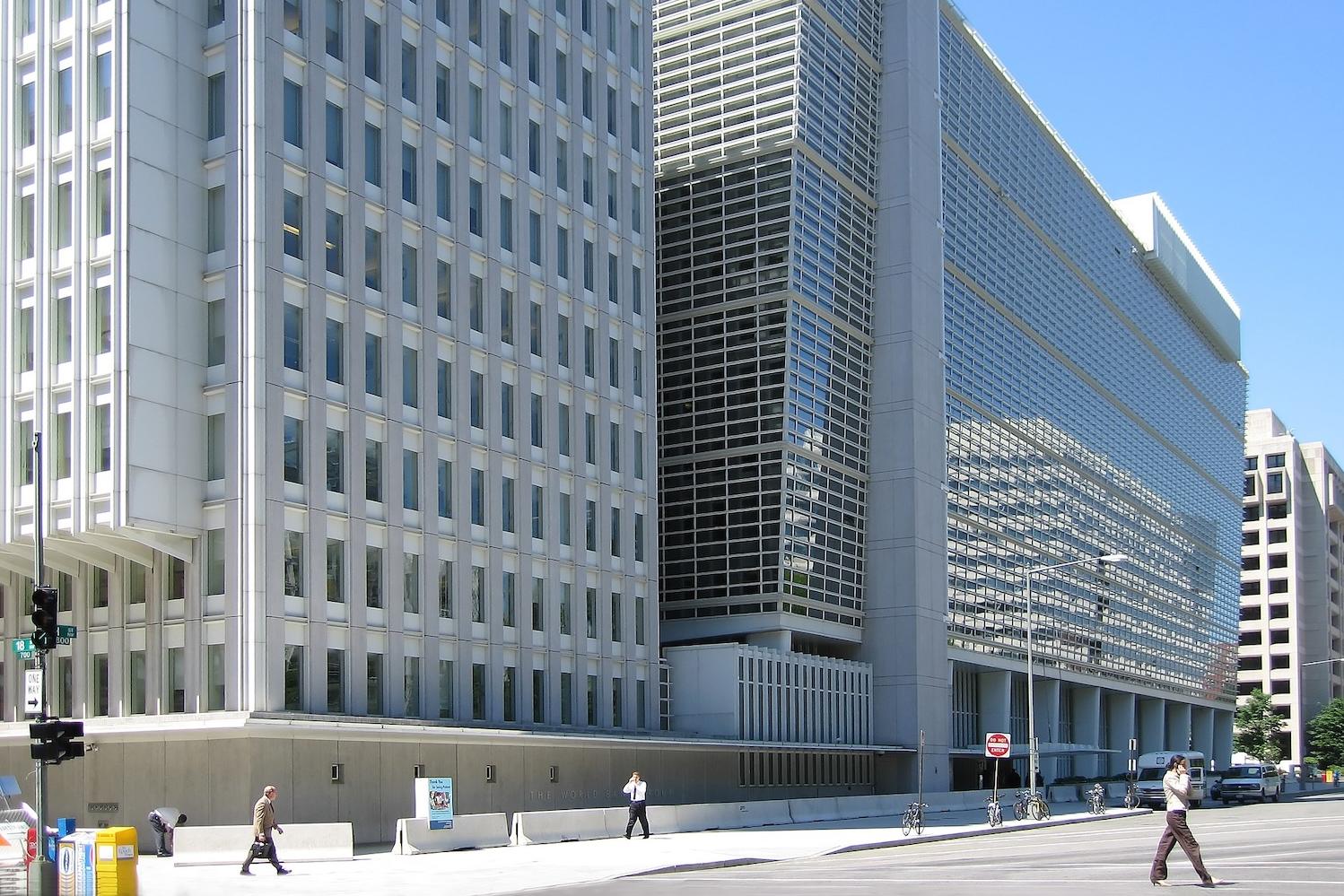

The World Bank Group headquarters in Washington, D.C. (Image: Kohn Pedersen Fox/Wikimedia Commons)
The devastating child abuse and subsequent cover-up that occurred at Kenyan schools funded by the International Finance Corporation (IFC), the private-sector arm of the World Bank, shocked the global community. News of the wrongdoing was highlighted in media reports last year and confirmed recently by the IFC’s accountability mechanism. After significant pressure, World Bank Group President Ajay Banga finally apologized last month for the IFC's actions with regard to the Bridge International Academies abuse and ordered an external investigation into the cover-up allegations.
This month’s World Bank Group spring meetings included discussions on the institution’s priority of becoming a bigger, faster bank with more money to do its work. This investigation needs to be a priority for the bank. Simply put, we cannot trust the IFC to be a responsible investor that deserves more money from donors until this investigation is complete and concrete recommendations are made to prevent something like this from occurring again.
The IFC has an accountability mechanism, the Compliance Advisor Ombudsman (CAO), where communities can raise concerns about the environmental, social, human rights impacts of IFC projects. This office is supposed to be independent from IFC management so that conflicts of interest will not hamper the thorough handling of complaints. The Ombudsman office did an investigation into the IFC’s investment in Bridge International Academies and found the IFC non-compliant with its obligations to due diligence around the risk of child sexual abuse in the Bridge schools. However, in the course of the Ombudsman’s investigation of harms caused by the project, IFC management and general counsel allegedly engaged in efforts to undermine the investigation and “neutralize” the lead investigator.
The World Bank Group is currently pushing for more resources to tackle climate change and other global crises. But how can the institution be trusted to do this work if its accountability structures are being undermined? As an advocate working with communities who have been harmed by projects by the IFC and other multilateral institutions, I know that the Bridge case is not the last complaint that the CAO will receive on IFC projects. Thus the stakes of this external investigation are high.
In order to rebuild trust in the institution, the Bridge cover-up investigation must be robust. Crucially, it must be independent from IFC management so that it can effectively investigate these disturbing allegations. In a letter sent to the World Bank Group leadership in November, 35 civil society organizations around the world — including my own — detailed what it would mean for such an investigation to be thorough. Our recommendations included investigation into alleged retaliation against CAO staff, and whether material that was critical of IFC and Bridge was unjustifiably removed from the Ombudsman's report. Additionally, investigators must have access to all relevant documents and to IFC staff and other stakeholders.
Importantly, if this investigation confirms that a cover-up occurred, meaningful change must happen to ensure that CAO can effectively do its work. The investigation team must have the power to recommend changes that would address any ongoing impacts on the effectiveness of the CAO, including those related to the Bridge investigation. These include the underlying, systemic causes of the alleged interference in the CAO process, such as the use of non-disclosure agreements, management’s participation in the selection process for the CAO leadership, the inadequate application of whistleblower protections, and IFC management’s interest in limiting its accountability to project-affected communities. Furthermore, the investigation report, recommendations, and implementation of these recommendations must be transparent.
After the shock, heartbreak, and loss of trust resulting from the abuse and alleged cover-up, the World Bank Group needs to step up in a big way as it undertakes this investigation. In order to restore trust from not only communities impacted by IFC projects, but also from shareholder governments and other stakeholders, it must show that it is taking this investigation seriously and conduct these proceedings with the utmost integrity and care. Otherwise, the global community does not have reason to trust IFC moving forward.
A Guide for Companies to Embrace Social Justice


A demonstrator sits inside a circle of flowers at a rally in Charlotte, North Carolina, following the murder of George Floyd in 2020. (Image: Andrew Valdivia/Unsplash)
By wide margins, workers, consumers and investors in the United States want businesses to engage with a broad range of social and economic issues, including climate change, racial justice, LGBTQ+ inclusion and unionization. Despite this consensus, such efforts continue to attract backlash from conservative policymakers, legislators, activists and media platforms who diminish social justice engagement by using the word “woke” as an all-purpose pejorative.
In response, BSR's Center for Business and Social Justice published a free, downloadable guide to help businesses address the barriers to taking action, such as a fear of backlash.
Matters of social justice are already intertwined with everyday business operations, because businesses are integral components of our societal framework and deeply connected to our communities, said Jarrid Green, co-director of the Center. This connection extends to the individuals who work for these businesses and those who invest in them.
“It’s important for businesses to engage in this work because: One, they’re already engaged in it," Green said. “They actively participate in our systems and processes that allow them to benefit from people and communities, the infrastructure that we build, and invest in them as a society. Two, we want our businesses, as well as our academic institutions and other sectors, to reflect the needs of our society and the America that we live in.”
The guide identifies the most common barriers to corporate action on social justice gleaned from the corporate members of BSR (the Business for Social Responsibility coalition) in focus groups, surveys, and ongoing requests for assistance. And it provides actionable steps to surmount those barriers.
For example, researchers at the Center argue that “mistakes are inevitable.” So, the more a company is able to openly discuss its engagement with social justice issues, the more likely it will be targeted by people looking to stir up controversy, who dislike its work or who expect more, despite its best efforts. Instead of striving to appear perfect, they recommend that companies lean on their values, don’t back down, and pay attention to stakeholder engagement to anticipate blind spots and prevent potential missteps.
A major factor in releasing the social justice guide at this time is how much the political and social environment has changed since the Center’s founding in 2022, Green said. At that time, there was a lot of interest in corporate engagement on social justice issues in the aftermath of the racially motivated killings of George Floyd and Ahmaud Arbery in 2020, he said.
Since 2020, Fortune 100 companies committed about $340 billion to fighting racial injustice, according to the McKinsey Institute for Black Economic Mobility. As the backlash against these measures grew, many companies pulled back on their commitments or were more reluctant to draw attention to their efforts, Green said.
“Since 2020, we’ve seen companies go and try to find the groups who are trying to move things forward across a range of social justice issues and working with community groups, academic institutions, and major national, regional or local nonprofit partners to actually address specific issues,” Green said. “Having that access and that network is incredibly important because that's how you get the work done.”
Practitioners of corporate engagement on social justice lack an ecosystem of support that can help them understand the right thing to do, how to move forward, and the best practices to do so, Green said. The social justice guide is intended to foster that ecosystem.
“What’s happening [now] is you see a range of activity, all of which doesn’t seem like it makes a lot of sense in terms of proactive behavior,” Green said. “In reality, it’s just people trying to move forward on their own, and what they need is a sense of community for their work to get done.”
Why You Should Travel Slowly Through Florence, Italy, and How to Do It


The Cathedral of Santa Maria del Fiore in Florence, Italy. (Image: Jonathan Körner/Unsplash)
Florence, the capital of Tuscany, has been a destination for art enthusiasts since the Renaissance. While the pandemic shuttered the tourism industry in Florence for more than a year, tourism has since bounced back, bringing with it both an economic boom and overwhelming crowds.
Overtourism is rife in Florence and regions throughout Italy. With a population close to 361,000 residents, Florence typically receives between 10 million and 16 million tourists each year. But with a bit of extra planning, travelers can experience the splendor of the region while also being conscious of their social and environmental impacts by touring in smaller groups, spending more time in one place and shopping locally.
Sustainable travel is small and slow
There is a reason Venice introduced entrance fees for travelers to the city who are not staying the night: Large groups that flood the city from cruise ships or bus tours for only a few hours before leaving for their next destination crowd out locals and leave behind a trail of litter and smog, without offering any meaningful economic benefit to the city. Crowds are infamous in Florence. Giant tour groups of 50 or more regularly take over entire city blocks at a time, and tour buses pollute the air as they idle along busy thoroughfares.
When it comes to tours, smaller is better. Florence boasts countless beautiful sites with fascinating histories, and there is no shortage of tours for curious travelers wanting to learn more. However, large group tours are notorious for disrupting the quality of life in cities, overwhelming the capacity of local businesses and restaurants and making it difficult for locals to go about their daily lives.
When possible, opt for small group tours. Instead of aiming to see every historical site in Florence and the surrounding region, plan to stay in one area for longer. For those wanting to get outside of the city center, bike tours are a great way to see the region without adding to the traffic congestion. Florence by Bike offers bike tours in and around Florence for all skill levels and group sizes.
Supporting Florentine artisans
Florence has been a home to artists and artisans for centuries, and no trip to Florence is complete without a visit to an artisan's workshop. While the Oltrarno neighborhood is famous for its artisan population, tourists should not skip the artisan shops in Sant’Ambrogio. For hand-built ceramics with motifs inspired by the Tuscan countryside, MudMoiselle is a must-see. Just down the street from MudMoiselle is the workshop of Cecilia Falciai, who specializes in “scagliola,” an Italian art form that utilizes inlaid handmade pigments to give a mosaic-like effect.
Florence is famous for fashion. For a sustainable twist on Florentine couture, consider visiting Essère Atelier, where designer Ilaria Tolossi makes dresses, blouses, skirts, trousers, and more by hand from natural fabrics. Many of the fabrics she uses come from excess textiles that other clothing manufacturers and fashion houses would have thrown away.
Enjoying the flavors of Florence
Eating at locally-owned restaurants for meals is a great way to support the local Florentine economy. For an authentic, high-quality meal, avoid restaurants directly adjacent to tourist sites where servers are standing outside with menus. Try Dalla Lola in the Oltrarno neighborhood for a taste of modern Tuscan cuisine. The menu changes regularly, but a recent lunch at Dalla Lola included fried tortellini with a cocoa-mayonnaise dip, gnocchi with caramelized onions in a miso sauce, and a tart citrus panna cotta served in a lemon peel.
Gelato is another Florentine specialty, but tourists should be careful to avoid gelaterias that showcase mountains of gelato piled high at eye level. High-quality gelato melts quickly, so seek out gelaterias that keep their gelato under lids, or not heaped up over the level of the freezer. My Sugar makes its gelato flavors fresh daily, often featuring seasonal produce from a nearby market. They also utilize unexpected ingredients from other parts of the world, and their "sesamo nero," or black sesame, flavor is a particularly delicious example of a traditionally-crafted gelato inspired by global flavors.
Finally, some of the best pizza in Tuscany can be found in Fiesole, a small town overlooking the city of Florence and a quick bus ride from the city center. Buca delle Fate utilizes fresh, often organic ingredients. And the owner, originally hailing from Calabria, also enjoys featuring spicy Calabrese sausages and hot oils on the pizzas. A recent option included a pizza with truffle sauce and fresh arugula. The pizza chef is always happy to make pizzas in a heart shape to delight any young children in attendance.
The problem with short-term rentals
The choices travelers make for their accommodations have big impacts on local communities. As in many parts of the world, the explosion of short-term rentals created a housing crisis across wide swaths of Italy, driving up rent and causing a scarcity of affordable homes. For example, the number of Florence-based apartments listed on Airbnb increased to more than 14,000 in 2023 from less than 6,000 in 2016, according to the city of Florence. Meanwhile the average cost of rent increased by 42 percent and was up 15 percent over the last year alone. The housing shortage has hit low-income Italians in particular. Last year, Florence instituted a ban on new short-term rentals in the city center, but the ban was challenged in court.
Conscious travelers can avoid exacerbating the housing crisis by opting for family-run hotels or farm stays, known in Italian as “agriturismi.” Choosing these options supports the local economy without contributing to the housing crisis. Many smaller accommodations offer bikes for guests to borrow, allowing travelers to further mitigate their environmental impact.
For travelers looking to stay in a serene rural environment and enjoy some of the best wines in the region, there is no better option than Querceto di Castellina. About a 45-minute drive from Florence, Querceto di Castellina is a winery and agriturismo that offers wine tastings, cooking classes, and for the fortunate visitors who can snag tickets, summertime wine dinners that feature local musicians and artists.
Responsible travel for a more sustainable tourism industry
The Florentine economy is dependent on the millions of travelers who come to the city every year to experience the beauty of “la dolce vita,” or “the sweet life.” But as overtourism threatens the vitality of the industry and quality of life for the locals, it is crucial that tourists travel consciously and make choices that support the vitality of Florence and the surrounding region.
This article is part of Travel Month in our 2024 Sustainable Living Challenge, where we unpack accessible ways to see new places and get around your hometown with a lighter impact on the planet. Learn more and take the challenge here.
A Sustainable Travel Guide to Central New York
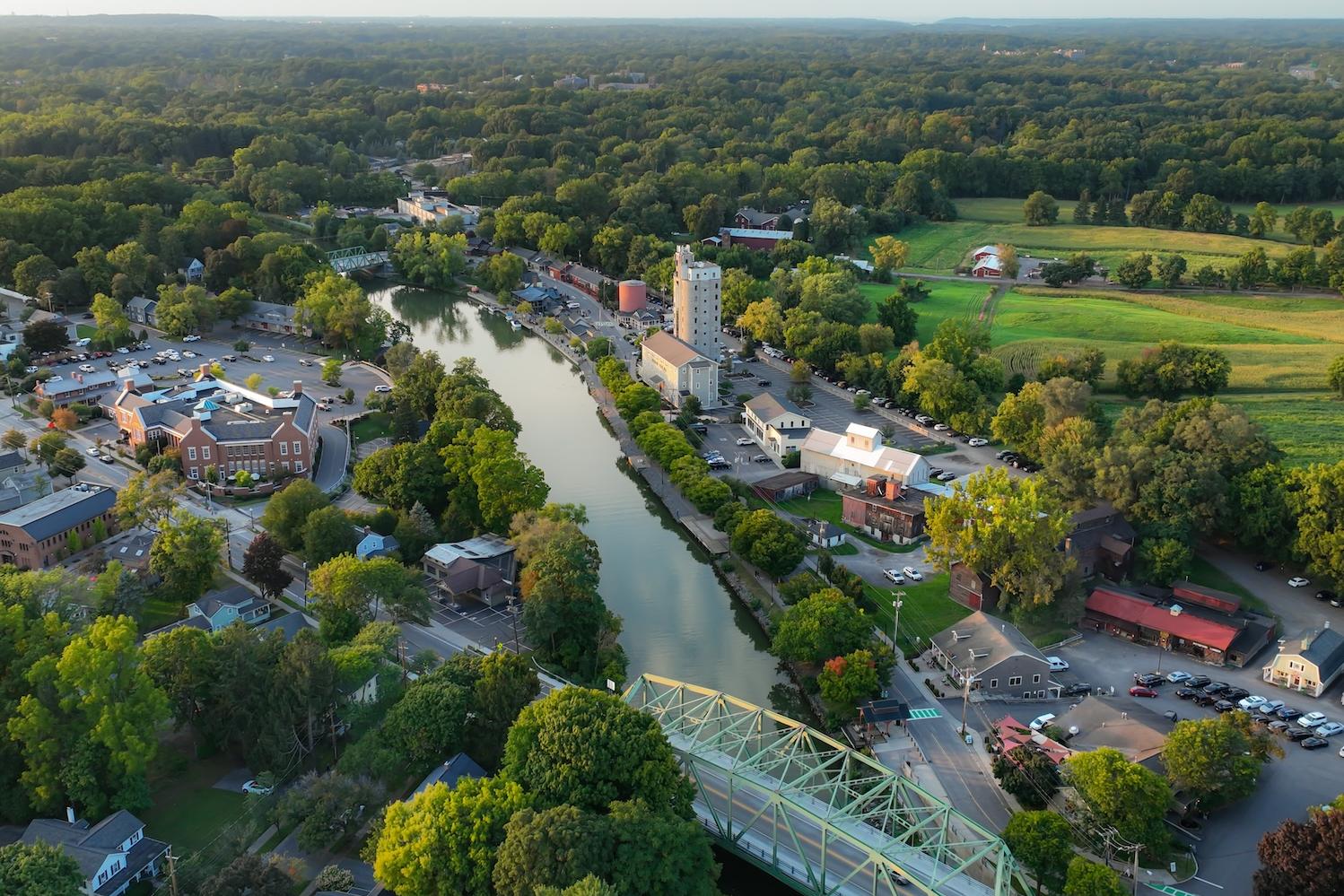
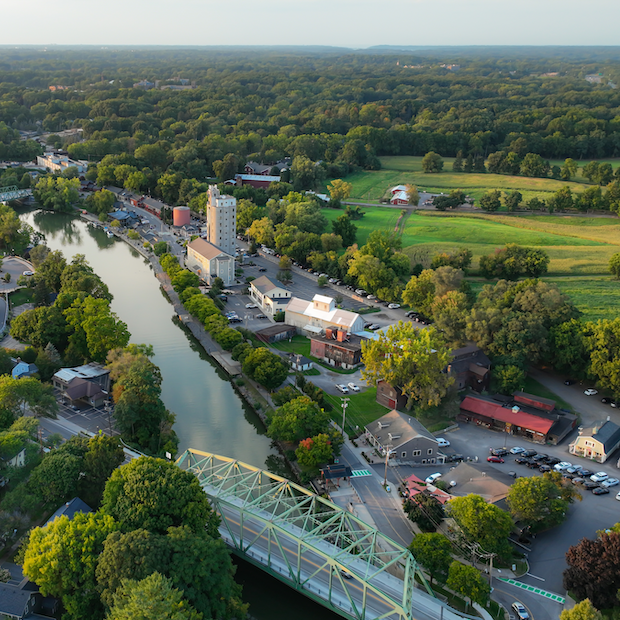
An aerial view of the Erie Canal in Central New York. (Image: Thomas/Adobe Stock)
The wonderful waterways and unique natural formations of Central New York tell a story of conservation and appreciation for the environment. Through consistent preservation, many of the area’s most fantastic formations retain their beauty, while others are in the process of being restored to their former glory.
The Syracuse metro area is home to a plethora of parks, reservations and heritage areas abounding with natural wonders. Next time you find yourself in Central New York, use this roundup of must-see nature locales — all within a 30-minute drive from Syracuse — to tailor your visit to support local businesses, conservation and sustainability efforts.
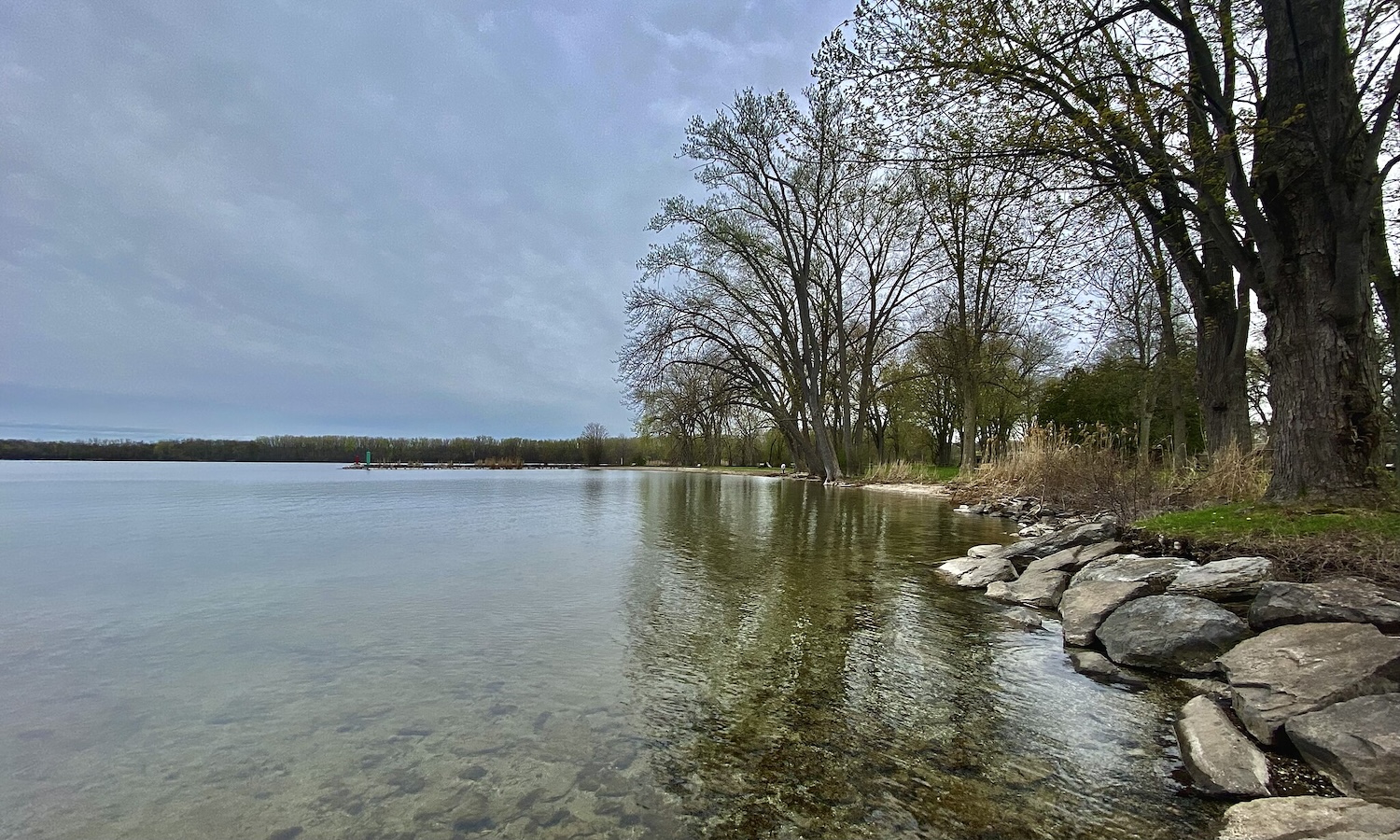
1. Onondaga Lake
Once the most polluted lake in America, steady conservation efforts are revitalizing Onondaga Lake, resulting in the return of its most iconic denizens. The ancestral land of the Onondaga Nation is once again home to a thriving bald eagle population.
In winter months, the spectacular birds of prey nest in the trees of the shoreline commonly known as Murphy’s Island. An avid community of birdwatchers has developed around a shared appreciation of these massive birds. Visitors vying for a view can join a guided eagle watch tour with the Onondaga Lake Conservation Corps.
What’s more, the Skä•noñh Great Law of Peace Center, a museum and cultural center chronicling the story of the Haudenosaunee people, is just down the road from Murphy’s Island. Learn about the significance of the bald eagle and the sanctity of Onondaga Lake from the original conservationists of this remarkable body of water.
Cap off your explorations at one of Central New York’s most beloved eateries, Heid’s of Liverpool. This historic hot-dog haven slings the Syracuse-based Hofmann Sausage Company’s famous franks and coneys, and it's just down the road from the Great Law of Peace Center.
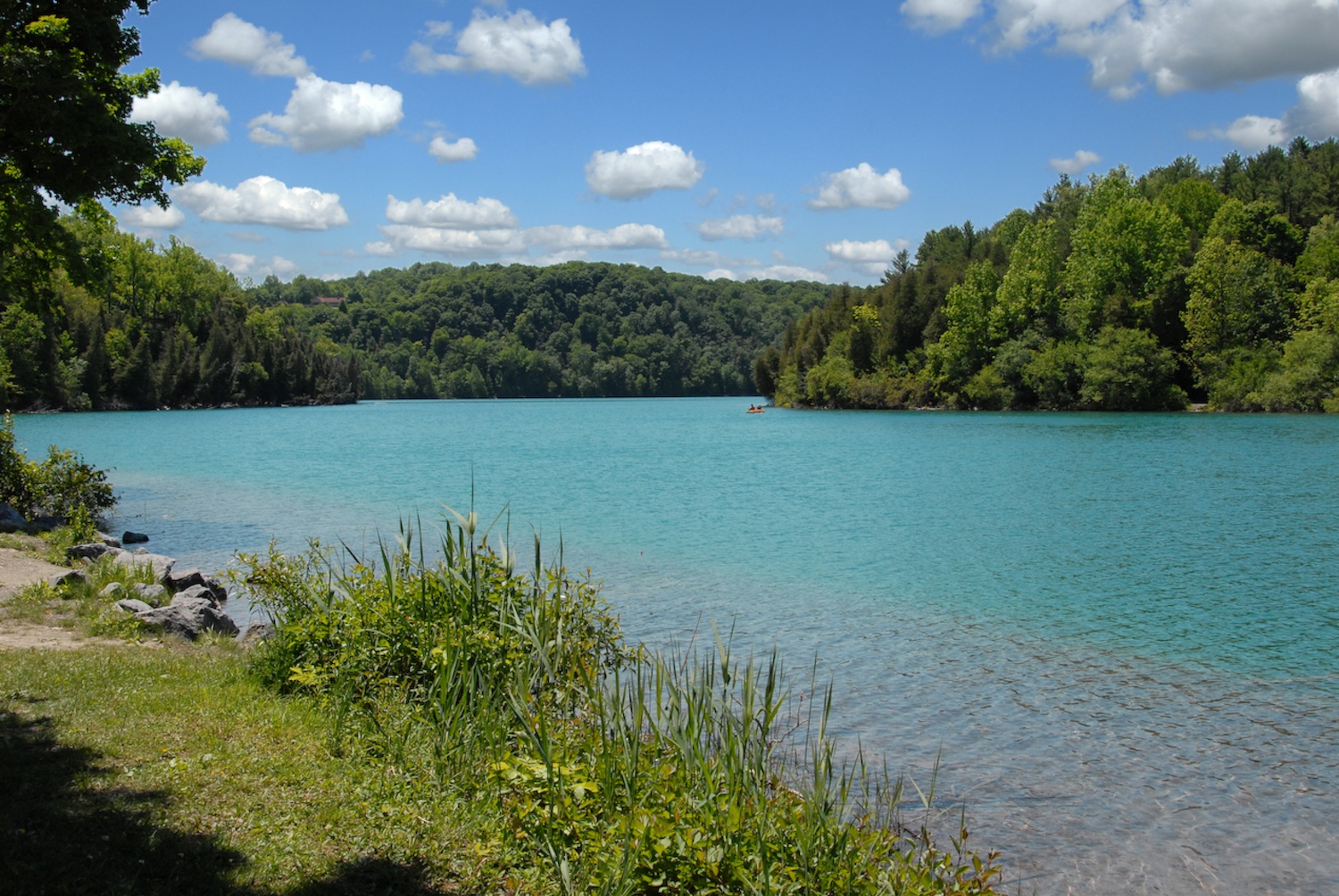
2. Green Lakes
Ever heard of a meromictic lake? Most Central New Yorkers have! Meromictic lakes are bodies of water that don’t have seasonal turnover, resulting in incredibly clear, blue-green waters. These lakes are exceedingly rare, with just 36 in the world, and Central New York is home to not one but two of these incredible formations.
Green Lake and Round Lake can be found in Green Lakes State Park in the town of Manlius, and consistent preservation has maintained their beauty and relevance for locals and tourists alike. Visitors will delight in hiking the easily-traversed trails around both lakes. A slew of other activities like canoe and rowboat rentals, lifeguarded beaches with swimming and diving areas, an event center overlooking Green Lake, golf and disc golf courses, and campgrounds are also on offer.
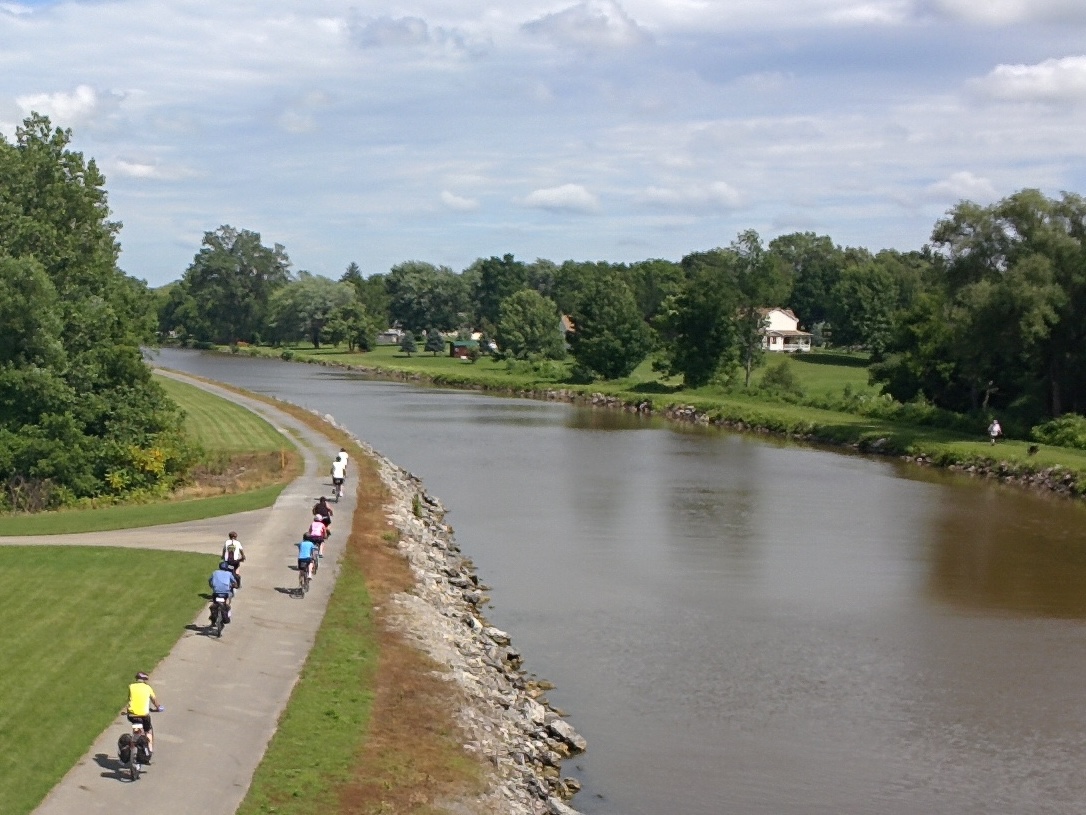
3. The Erie Canal
A great engineering marvel of the 19th century stretches across Central New York. The Erie Canal has connected the Empire State since 1825, first through commerce and now through recreation and shared historical appreciation. Across the state, Erie Canal parks are a consistent draw for tourism and local outdoor pursuits, such as boating, fishing and biking.
An engaged community of canal enthusiasts maintains the canal’s history. They preserve the abandoned locks and bridges of the “Old Erie Canal," upkeep and install historical markers, and clean up the operational barge canal — which is the third iteration of the original. Activists in Rochester, Syracuse, and other canal cities are also working to restore and reincorporate historic canal sections that once flowed through their downtowns.
In Syracuse, visitors can check out the Erie Canal Museum for a bevy of information on this storied waterway. Old Erie Canal State Park is just a 15-minute drive from the museum. The park is a 36-mile stretch of the now-defunct second iteration of the canal, and makes for a serene walk any time of year. Walk the same path once trod by young boys leading mule teams, explore old lock systems, and enjoy the variety of natural life that calls these waters home. One entrance to the park is located right across the street from an entrance to Green Lakes State Park, so industrious day-trippers could feasibly explore both.
Intrepid Erie Canal enthusiasts might even consider taking on the Erie Canalway Challenge by traversing a part or the entirety of the Erie Canalway Trail, a 360-mile, cross-state expedition. Thousands of people complete this trip each year, and canal towns are well-accustomed to taking care of bikers and kayakers on their way to earning the coveted title of “End-to-Ender.” Register to run with a group in the annual Cycle the Erie Canal Bike Tour, or complete the trip with a couple of close friends like I did in 2021. You’ll encounter Lockport dive bars and Rochester microbreweries, massive barges and little canoes, torrential rains and spectacular sunsets, historical markers and physical monuments, and, above all, an array of people from all walks of life — each with a story to tell. It is truly a life-changing adventure.
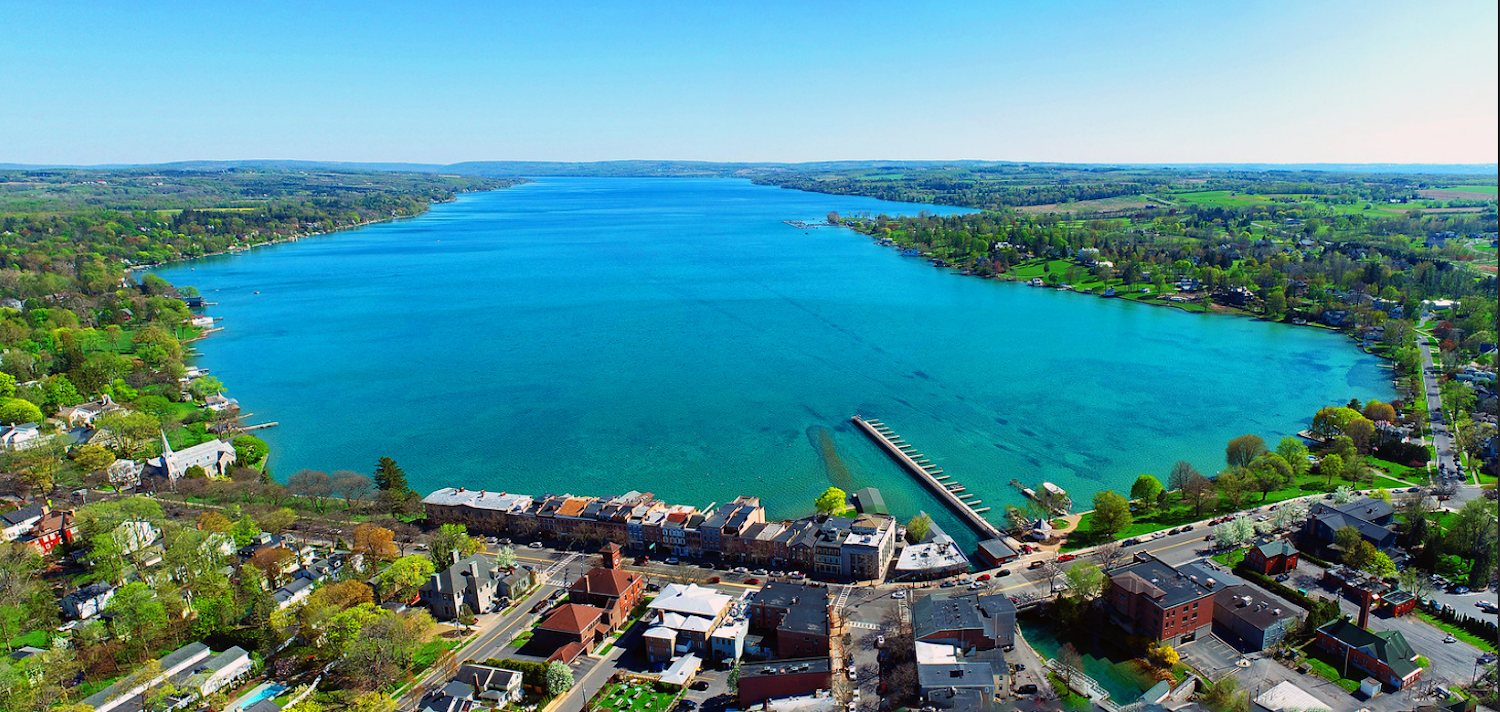
4. Skaneateles Lake
Skaneateles is a quiet little village situated around an awe-inspiring lake known for attracting many big-name celebrities seeking a second home or summer retreat. When the last ices of the seemingly never-ending Central New York winters thaw, the lake comes alive with recreationists of every stripe. Yachts and pontoon boats sail past paddleboarders and jet skiers, while fishermen cast into the deep waters from all sides. You’ll get that classic communal feel of a small-town lake, while the tasteful homes in the neighborhood will make you consider relocating.
Speaking of taste, you can treat yourself to some great eats of varying elegance once you’re out of the water. Doug’s Fish Fry offers delectable yet affordable fried seafood fare, and it's no wonder that the place is so beloved among locals and residents of surrounding areas willing to make a drive. Meanwhile, the village boasts an array of highbrow fine-dining options, such as the Tuscan-themed Rosies Cucina. Beyond the lake and the restaurants, the village boasts various shops selling local goods, art, souvenirs and jewelry.
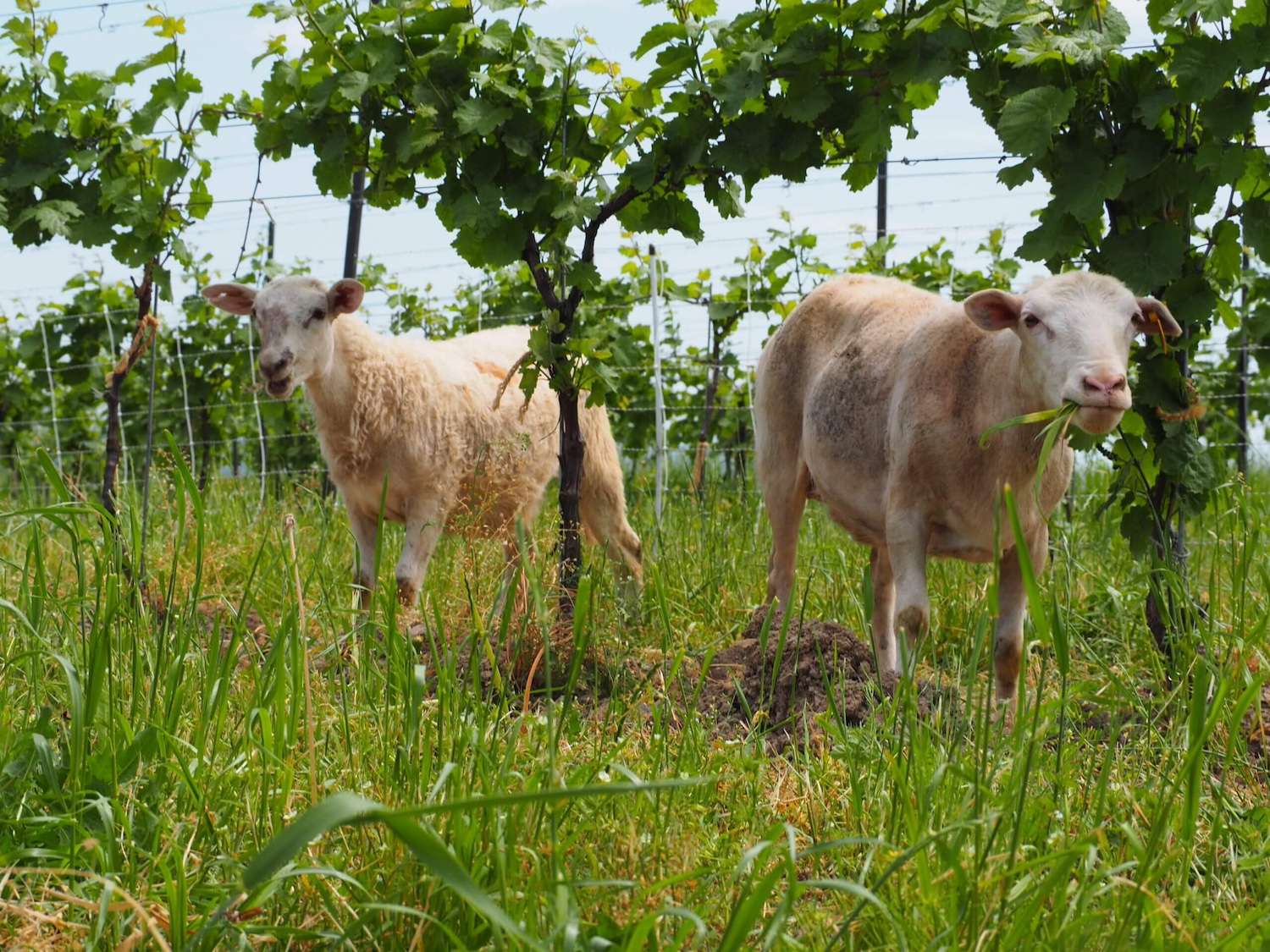
5. The Finger Lakes Region
The Finger Lakes Region is the only destination on this list that’s further than a 30 minutes from Syracuse. Home to some of the greatest wineries on this side of the Rocky Mountains, the region is a booming tourism destination just over an hour from the city. The area’s name derives from the five Finger Lakes, strangely narrow bodies of water that appear on maps like some sort of slash or claw mark.
This Central New York region is home to a bounty of sustainable wineries. Their grape growing thrives in part because of the surrounding soil and the temperature-regulating effect of the deep lakes. Seneca Lake is the main of the five lakes, boasting more than half of the area’s wineries. Locations such as Hermann J. Weimer Vineyard set the standard in sustainable food and drink. The farm and vineyard uses no pesticides or herbicides, maintaining prestige while prioritizing environmentalism.
Wine is just the tip of the iceberg around here. The Finger Lakes region boasts a plethora of breweries and farm-to-table dining options that consistently attract millions of visitors each year.
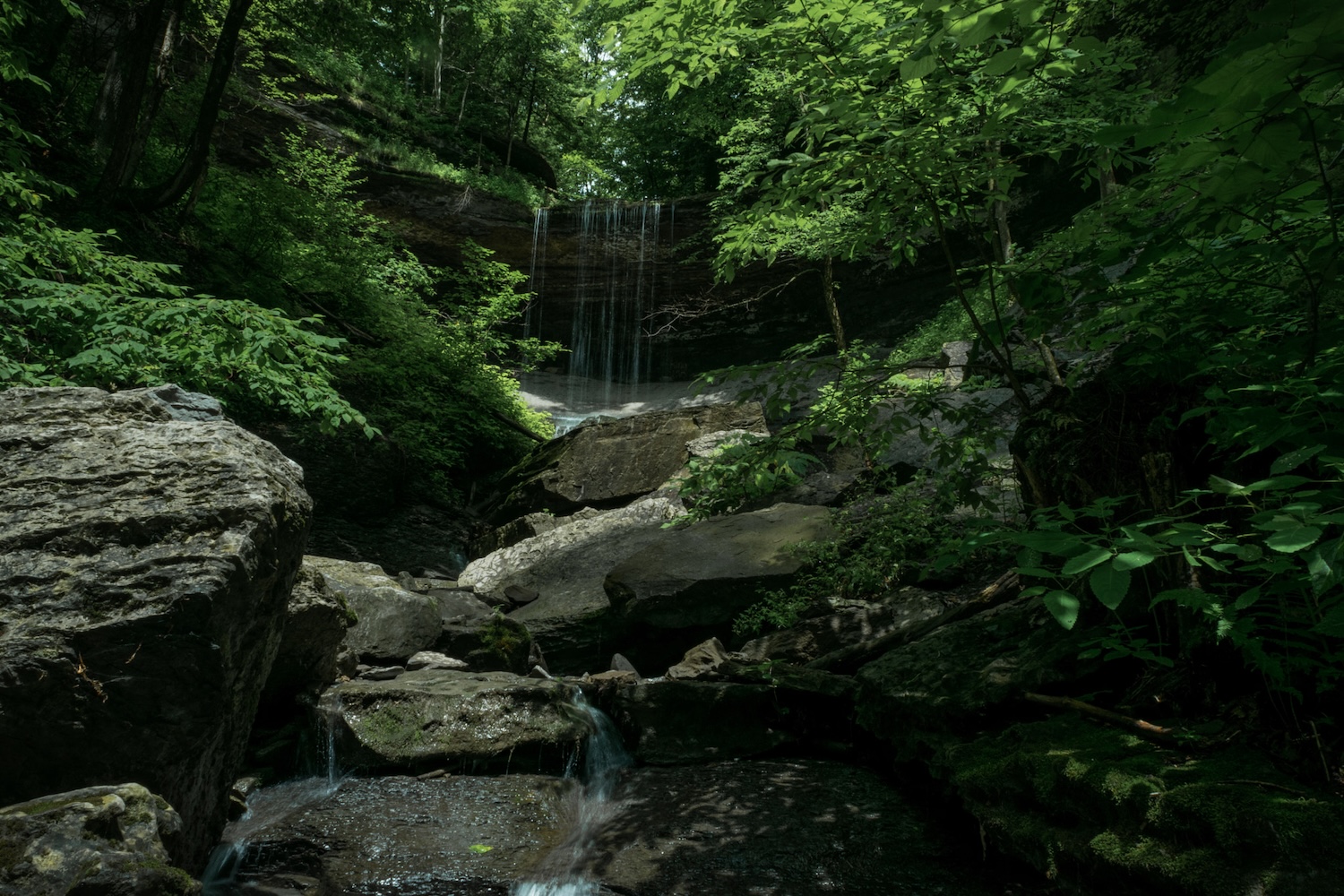
6. All of the rest
There are truly too many amazing outdoor locales to explore throughout Central New York, with no way to highlight them all. Here are just a few of the other natural attractions in this region:
- Tinker Falls, located in the Labrador Hollow Unique Area, features a 50-foot waterfall that visitors can walk behind.
- Chittenango Falls State Park is home to an impressive 167-foot waterfall and is the only home to the critically endangered Chittenango Ovate Amber Snail, the subject of many local conservation projects.
- Clark Reservation State Park offers visitors the chance to traverse unique limestone trails that follow a ring of cliffs and crags overlooking a breathtaking little lake. The stone paths don’t present a challenge so much as a change of pace from a typical hiking trail.
This article is part of Travel Month in our 2024 Sustainable Living Challenge, where we unpack accessible ways to see new places and get around your hometown with a lighter impact on the planet. Learn more and take the challenge here.
Nonpartisan Ways Brands Can Support Free and Fair Elections in the U.S.
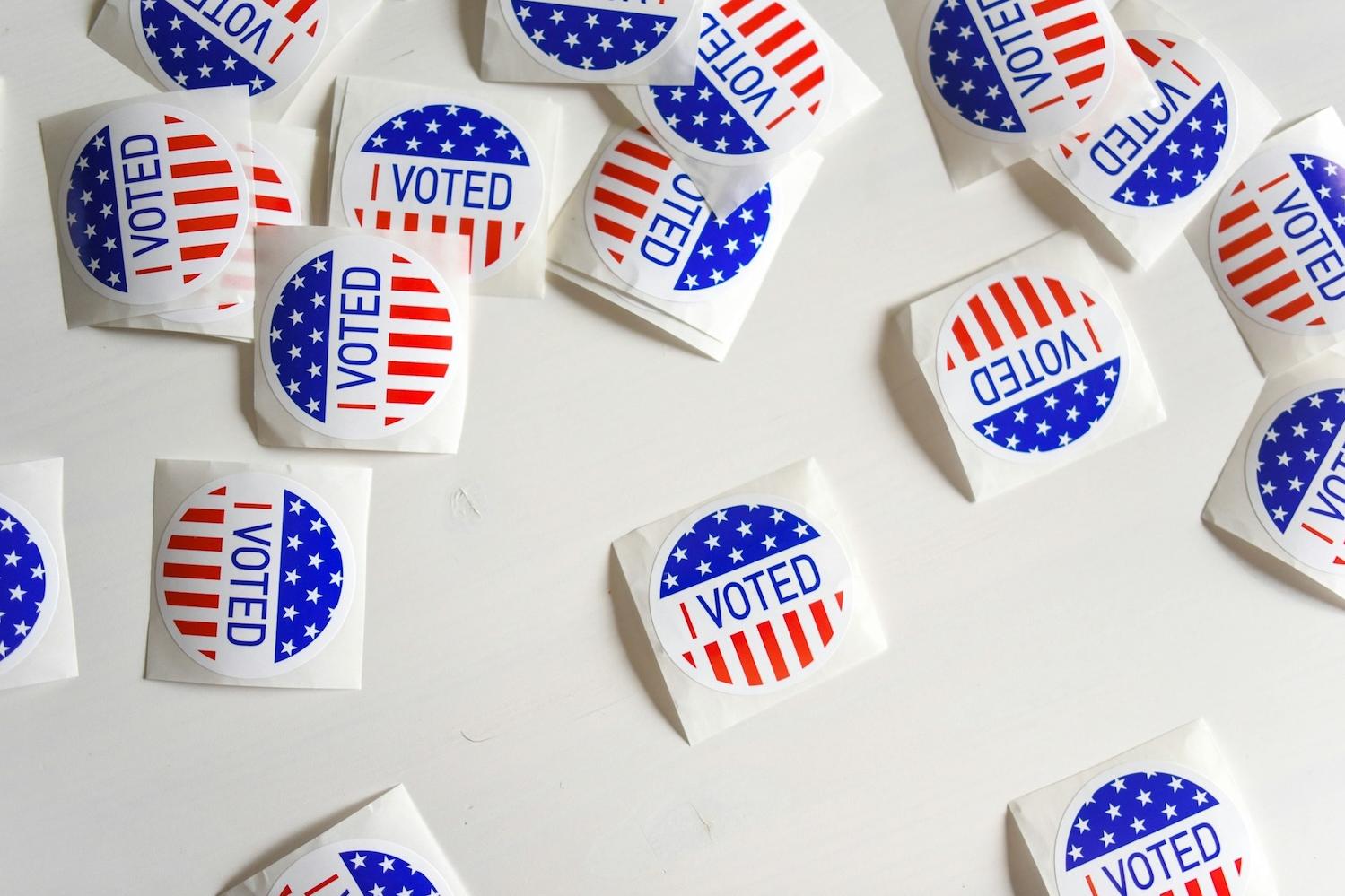
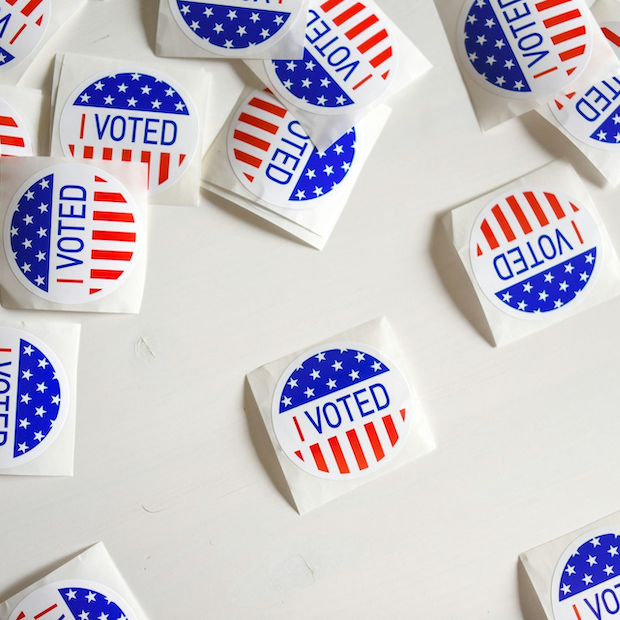
(Image credit: Element5 Digital/Unsplash)
Eighty-five percent of business leaders agree a well-functioning democracy is essential to U.S. capitalism, but 78 percent are concerned about the state of democracy in the United States today. That's according to a recent report from the Leadership Now Project, a bipartisan, pro-democracy group of more than 400 business leaders, which warns of growing political instability in the U.S. ahead of the 2024 election cycle and the potential risks to business.
Business leaders act on worrying threats to free and fair elections in key swing states
Changes to U.S. election administration laws have watchdogs worried. In particular, 15 bills enacted in 13 states — and another 185 introduced in 38 states — would allow partisan state legislatures to manage elections, Leadership Now observed in its report.
The group named election administration laws among the risks to business and society ahead of the presidential and legislative elections in 2024. Others include disinformation campaigns aimed at sowing distrust in the electoral process and threats of violence toward poll workers and election officials.
All of this makes Americans, as well as election workers, understandably nervous. Only 37 percent of Americans surveyed by the Public Affairs Council believe the 2024 election will be open and honest. Advocates worry this could keep people away from the polls, particularly in the seven swing states expected to decide the presidential election: Arizona, Georgia, Michigan, Nevada, North Carolina, Pennsylvania and Wisconsin.
"Because they're swing states and the election is expected to be very close, that's where you have the greatest risk of efforts to undermine the results," said Daniella Ballou-Aares, founder and CEO of the Leadership Now Project. "In Arizona right now, 80 percent of the election administrators have quit their jobs because they’ve been harassed or undermined."
Arizona business leaders associated with the Leadership Now Project are looking toward their peers in another swing state, Wisconsin, to navigate an increasingly fraught landscape and preserve free and fair elections.
Among its efforts, the bipartisan coalition Wisconsin Business Leaders For Democracy stood up to defend state Elections Administrator Meagan Wolfe from an attempted ouster by Republican legislators. Many of Wolfe's detractors in the statehouse repeated false claims of widespread voter fraud in Wisconsin in the 2020 presidential election as a reason for her firing. But the group of prominent Wisconsin business leaders, many of whom are also members of Leadership Now, feel differently.
"Running elections in a big state like Wisconsin is a complicated process," Tom Florsheim, Jr., chairman and CEO of the Wisconsin-based footwear company Weyco Group, told local television news outlet Spectrum News 1 last year. "Here we have somebody that ran an election through a pandemic, which has a lot of challenges in itself, that did an exemplary job, and she's received accolades from both Republicans and Democrats."
A Wisconsin county judge ultimately decided Wolfe should remain in her position and affirmed that legislators do not have the authority to remove state election officials. Among other efforts to uphold integrity and confidence in local elections, members of the Wisconsin business group refuse to endorse any candidate who does not commit to certify future elections. In a campaign launched this week, it's calling on fellow Wisconsin businesses to help their customers get registered to vote, give their employees time off to cast their ballot and encourage poll working.
Leadership Now's Arizona members are looking to replicate some of these actions in an effort to uphold free and fair elections in their state. "It's a pretty powerful example," Ballou-Aares said. "It could be happening in every swing state."
In swing states and beyond: How business leaders can act to defend democracy
"The efforts to undermine faith in elections are part of a broader undermining of the rule of law that is dangerous for business," Ballou-Aares continued. "If you look globally at history, as well as in the last 20 years, when you see countries sliding from democracy … business is often late in recognizing that things are going wrong. They're not the first people to feel it. But then once things erode too much, it's much harder to pull back."
Standing up for basic tenets of democracy — such as the right to vote without interference and have that vote be counted — is not partisan. And business leaders don't need to back a candidate or make a political statement in order to get involved. Here are just a few things to consider as the U.S. and half of the global population prepare to vote in national elections in 2024.
Give employees time off to vote and work the polls. Over recent years, thousands of major companies pledged to give their employees paid time off to cast their ballots as part of business coalitions like the Civic Alliance and Time to Vote. This is a major step to remove tough choices between earning a living and exercising the right to vote.
With poll workers in short supply, going the extra mile to give employees the full day off to volunteer at their local polling place can maximize impact even further. "We need to make sure our elections are administered well," Ballou-Aares said. "We need to support poll workers. We need to support people taking time off to work at the polls. And we need to recognize election officials and workers as critical public servants that we hold in high regard."
Old Navy, for example, offered its 50,000 employees eight hours of paid time off to volunteer as poll workers during the 2020 election and recruited hundreds of customer volunteers on its website, resulting in thousands of hours of poll support. It also earned the brand 2 billion earned media impressions and the most social media buzz it ever received in a single day, Leadership Now highlighted in its report.
Educate people about trusted sources to counter misinformation. In the World Economic Forum's annual risk report, more than 1,400 business executives, politicians, NGO leaders and academics outline the greatest dangers facing the economy each year. Chief among them in 2024 is the threat of misinformation and disinformation driven by artificial intelligence (AI) and how it could influence key elections around the world.
In the U.S. in particular, tech companies and the federal government have moved to restrict AI-generated misinformation, but it's doubtful sufficient protections will be in place in time for the November elections, Ballou-Aares said. Given this, it's up to voters to be diligent. Brands can help by reminding their customers about key election information such as how to find their local polling place, the date of Election Day and the time polls are open, as well as reinforcing the value of trusted sources for information about elections.
"Remind people that, with AI especially, there is a lot of disinformation around elections," Ballou-Aares suggested. "Remind them to check their sources. Even that is a useful thing that companies can do."
Review political spending and trade group memberships. Following the riots inside the U.S. Capitol Building on Jan. 6, 2021, a number of U.S. companies committed to halt campaign donations to lawmakers who sought to overturn the results of the 2020 presidential election. Some followed through and some didn't, but the shift still had an impact. "Even though not everyone's stuck with it, enough did that the resources of election deniers in Congress have gone down meaningfully," Ballou-Aares said.
The majority of funding to political candidates, parties, PACs and outside spending groups comes from business, so governance of this spending matters. Beyond donations to individual politicians, companies should review their political spending and trade group memberships on a regular basis, Ballou-Aares advised. "Your board should know where your money goes politically. Your CFOs should know," she said. "I cannot tell you the number of board members and CFOs I've talked to who have no idea."
Resist the rhetoric. "Too much of what's happening in the business community right now is responding to rhetoric," Ballou-Aares said. She used the ongoing political pushback against the use of environmental, social and governance principles in business decision-making as an example. "Someone says, 'We don't like ESG.' And then everyone agrees, 'I'm not going to say ESG anymore.' That's really dangerous. It’s the same with the idea that speaking about safe elections is partisan."
Yale University historian Timothy Snyder described this phenomenon, which he dubbed "anticipatory obedience," in his 2017 book "On Tyranny." Essentially, as an eroding democracy moves to penalize one person or group for a specific action, others begin to fall in line even before they are directly compelled to do so. “Americans today are no wiser than the Europeans who saw democracy yield to fascism, Nazism, or communism in the twentieth century,” he wrote. “Our one advantage is that we might learn from their experience.”
For U.S. business leaders, that means drowning out the noise, holding strong to decisions and providing evidence to support them as needed. "Stick to the fact-based core of what you know to be true, and don't be influenced by rhetoric," Ballou-Aares said. "You can focus on the things that are detrimental to our system, and that's really valuable."
How Big Tech Can Deploy Solar on Schools for Community Benefit


(Image: Nuno Marques/Unsplash)
Big U.S. tech companies have become adept at using power purchase agreements (PPAs) to acquire renewable energy. The PPA model can also benefit school districts and other non-commercial institutions, but some states prohibit it. A recent policy shift in West Virginia illustrates how tech firms can help school districts take advantage of new PPA opportunities.
PPAs: The state of play
PPAs came into wide use as a de-risking tool for renewable energy developers following the U.S. Energy Policy Act of 2005. These agreements are essentially long-term contracts between an energy producer and an energy buyer, usually a utility or another corporate customer. The buyer commits to purchase energy from the contracted project — think: a new wind farm or solar installation — for a certain amount of time, providing the producer with guaranteed payback and the ability to take advantage of renewable energy tax credits. As motivation on the consumer side, wind and solar PPA rates are typically lower than local utility rates, and they are buffered from volatility in global energy markets.
Intuit and other leading tech firms — including Amazon, Salesforce and Google — were among the first corporations to recognize the role of these agreements in accelerating their climate goals. In 2020, for example, Intuit announced that a single PPA in Texas enabled the company to achieve 100 percent renewable electricity 10 years earlier than anticipated.
PPAs continue to be a leading factor in the tech sector’s transition to renewables in the U.S. and elsewhere. “Big tech remains a large contributor of PPA growth,” researchers noted in BloombergNEF’s 2024 Corporate Energy Market Outlook.
Breaking down PPA barriers
PPAs are also accessible to schools and other non-commercial entities in 29 states and the District of Columbia. Until 2021, that group did not include West Virginia. PPAs were prohibited in the state until 2021 when the West Virginia state legislature passed a bill to allow them.
A series of electricity rate hikes contributed to the pressure for change in West Virginia, a high-poverty state in the heart of Appalachia where the once-dominant coal industry has been losing jobs for generations. The bill became law shortly after passage in April 2021, though Gov. Jim Justice declined to sign it.
Intuit spots an opportunity
For Intuit, the shift in West Virginia policy provided a new opportunity to link school-based PPAs with additional community benefits, consistent with the company’s ongoing Climate Positive initiative that aims to reduce 2 million metric tons of carbon dioxide equivalent emissions outside of the company’s operations.
The company launched the Coalfield Solar Fund last year to encourage schools in underserved communities in West Virginia and Virginia to adopt PPAs, along with educational and job training programs focused on the solar industry. The fund is a partnership between Intuit, the nonprofit National Energy Education Development Project, and the Virginia-based solar developer and certified B Corp Secure Solar Futures.
“These communities have been an economic engine for the country for a century, and they have been impacted in an incredibly difficult and challenging way," said Debbie Lizt, Intuit’s head of global sustainability.
Coalfield Solar provides science, technology, engineering and math (STEM) education and job training grants of $50,000 to $150,000 for public schools and community colleges that enter into on-site solar PPA agreements with Secure Solar Futures.
An Intuit Prosperity Hub education and job training center in neighboring Virginia served as a model for the Coalfield Solar Fund. “Solar in particular was starting in Virginia. PPA’s were more accessible, and we had already formed a partnership with Secure Solar Futures in southwest Virginia for rooftop solar on schools,” Lizt explained. “The aim is not to just install solar, but also to provide access [for] future generations to be exposed to the potential jobs of the future and an opportunity for apprenticeships for the students.”
The ripple effect of PPAs
Calhoun County Schools in West Virginia is one of three school districts to win funding in Coalfield Solar’s initial round of awards. The grant will build on existing initiatives in Calhoun County, which has already made history as the first school district in West Virginia to enter into a PPA for solar arrays on school property.
The PPA was signed with Secure Solar Futures in the fall of 2022, enabling the installation of rooftop solar arrays on an elementary school and a middle school in the sparsely populated district of approximately 860 students.
“We hope that being the first public school system to install the solar panels on our roofs will encourage other school systems to follow suit,” Kelli Whytsell, superintendent of Calhoun County Schools, said in a statement.
That hope was soon in evidence. In November 2023, the West Virginia developer Solar Holler announced plans to install up to 5.3 megawatts worth of solar panels on multiple buildings under a PPA with the Wayne County Schools district, which is projected to save almost $6.5 million in energy costs over 25 years.
“The agreement represents the largest power purchase agreement signed in West Virginia to date and the largest single demonstration of solar on public schools anywhere in Appalachia,” according to a statement from Solar Holler.
Expanding the benefits of solar PPAs
The shift in West Virginia state policy is not the only factor motivating the PPA trend there. “In addition to the state legislation that made PPAs possible, the Inflation Reduction Act passed in 2022 has been instrumental in making these types of projects economically viable,” according to Solar Holler. That’s due to changes to the tax code and other incentives for projects in coal communities.
Intuit has already seen an enthusiastic response to the Coalfield Solar program.
“We would not be able to accelerate the solar transition without the change in solar policies,” Lizt said, though she emphasized that the demand is driven organically as an extension of the role of local schools as economic engines and community builders. The Coalfield Solar program has seen an “incredible response from schools,” Lizt said.
The powerful community solar trend may be the next opportunity to overcome the resistance of West Virginia policymakers. Community solar projects provide access to local solar for all ratepayers, including renters and other households unable to install their own rooftop panels.
Legislation that would enable community solar in West Virginia failed to pass the legislature in the past, but supporters are trying again this year.
If it succeeds this year, there will be more opportunities for corporate sustainability managers to help provide communities with resources that promote economic growth and stability in an era marked by change and upheaval.
Aloha’s Pa’akai Bar Proves Aligning Profit and Planet Creates Delicious Results
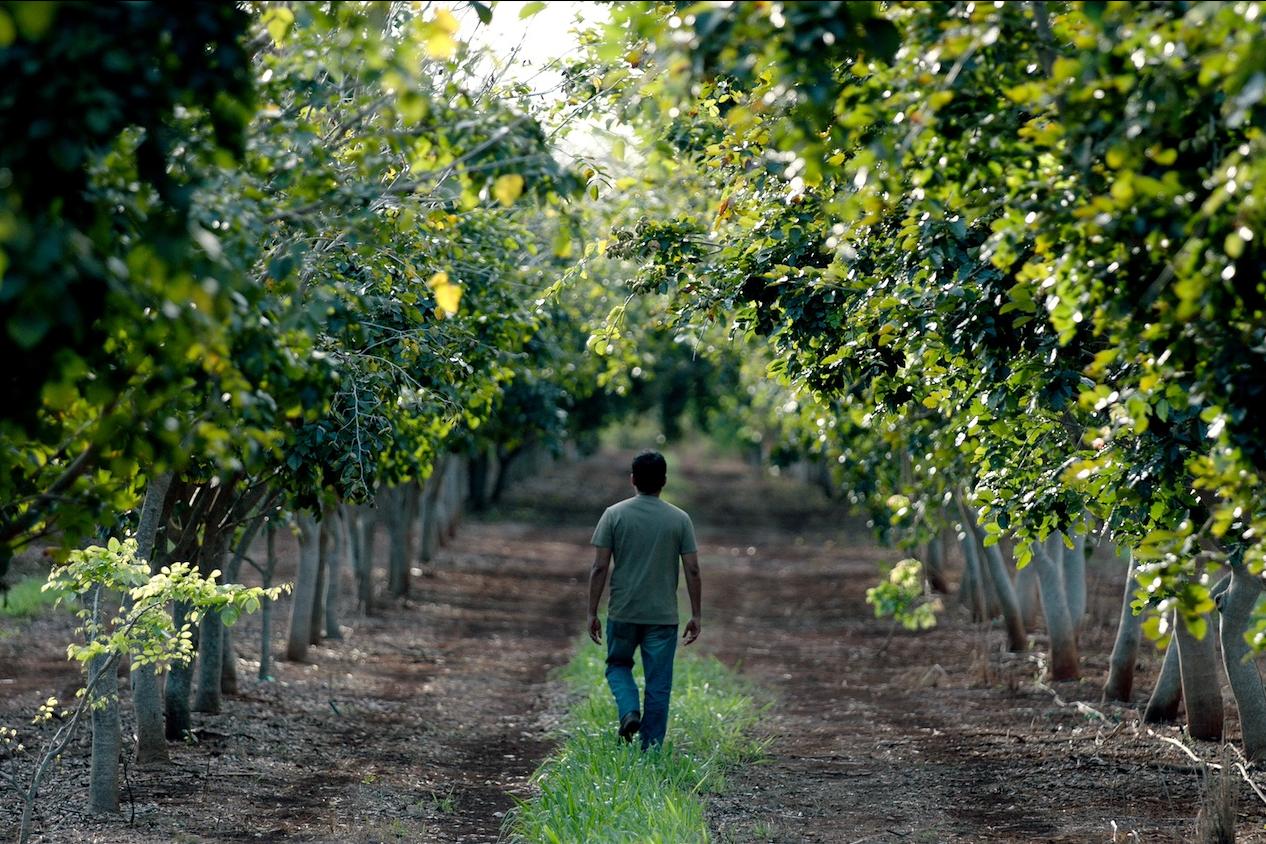

A farmer walks through a field of climate-resilient pongamia trees used to create Terviva's ponova oil, a key ingredient in Aloha's new pa'akai bar. (Image courtesy of Aloha)
The islands of Hawai’i are known for having some of the most spectacular beaches and clearest waters on the planet. Imagine the purest salt extracted from along these shorelines, through the most diligent process, jam-packed into a single bar.
There’s actually no need to imagine. The plant-based protein brand Aloha’s latest special-edition snack, the pa'akai protein bar, features ingredients from sustainable farms across Hawai’i — including artisanal sea salt and macadamia nuts — along with oil from the climate-resilient pongamia tree. It’s the product of collaboration, sustainable development, and genuine taste innovation.

These days, it’s not enough to simply pick up a product in the store to consume. Consumers realize the importance of understanding where their dollars are spent and how it might impact the environment. It’s important to understand what’s happening when these products are made, and the trickle-down effect not just for climate-vulnerable islands like Hawai’i, but also for the planet as a whole.
In the North, a great deal of climate science and research is taking place to build resilience against climate change. Meanwhile, in the southern tropical regions like Hawai’i, countries struggle to build the same resilience. They enjoy a special kind of vulnerability as the place where the majority of hurricanes and disaster wind systems are born.
Luckily, these regions also tend to be rich in resources that can help offset climate change and bring balance to local ecosystems. This is where Terviva’s work with the pongamia tree, and its collaboration with Aloha, come into play.
Terviva is a California-based agriculture company focused on helping farmers cultivate the climate-resilient pongamia tree around the world. The tree helps improve soil health as it grows, and it can thrive even in degraded areas across the world’s tropical climates. It produces a protein-rich legume similar to soybeans and peas that can be eaten whole or made into a cooking oil.
Oil from the pongamia tree has been used in Ayurvedic medicine and for reforestation across Asia. But Terviva brought it to the food market at scale with its ponova oil, and Aloha was the first brand to feature the oil in a mass-market product last year.

"We partner with farmers and communities around the world to harvest and grow pongamia, primarily in India, Hawai’i, Florida and Australia,” said Terviva CEO Naveen Sikka. “At the heart of what we do, we are a tree company. Planting pongamia — a climate-resilient, permanent tree crop — helps to revitalize both the land and communities which grow our food.”
These trees are harvested in the wild, by locals who benefit from the employment, but they are also replanted in highly-used farmlands to help replenish soil health and increase rainfall.
The new pa’akai bar includes Terviva’s ponova oil. For every new bar purchased, Aloha donates 10 percent of the profits to a nonprofit that provides Hawai’i’s youth with education and workforce development in the fields of natural resources, climate change mitigation and agriculture. This is essential for the climate-vulnerable Hawai’i. “Aloha’s special-edition pa’akai bar reflects our belief that local impact can drive global change,” Sikka said
As the ability to choose sustainable products and lifestyles continues to grow and the marketplace expands, documenting and replicating what works is becoming more essential. Understanding the logistics of these products helps consumers make choices. But for companies in the for-profit sector, a venture like this may seem scary, improbable and even unsustainable. In a conversation with TriplePundit, Aloha CEO Brandon Charron shared insights that could crack that myth wide open. The conversation was edited and condensed for clarity.
TriplePundit: People might think it’s difficult to get a partnership like the one between Aloha and Terviva going. What do you think could change the perception for other companies to get more involved?
Brad Charron: It wouldn't surprise me if in the not-too-distant future every food producer will be required to have a “traceable” supply chain. And not by regulatory bodies or government agencies, but stirred by consumers who want to know where their food comes from. As an entrepreneurial company, we, and those like us, who are already cognizant of the desire of their audience to learn more about “how it’s all built” have a head start and, increasingly, a leg up on competition. As consumer demand for more sustainable products increases, these kinds of “walk the talk” partnerships have even more meaning.
3p: How do these partnerships between Aloha and the sustainable farms and suppliers come about?
BC: None of it is easy. A partnership of this kind of differentiation compared to the “status quo” form of food production has to, by necessity, originate from a position of genuine interest and respect. You have to have a “creator’s mindset.” It’s hard work. It takes going the extra mile — literally. If creating this food was easy to do, everyone would do it.
Simply put, at Aloha, we’re on a mission to leave the food world better than we found it. That's why we scour the globe to find only the most delicious and good-for-you ingredients to make our bars, drinks and powders. It’s also why we’re continuously looking for forward-thinking companies to build and to co-create, those organizations that are reimagining what it means to produce food in a way that is better for our communities, and the planet.
3p: How do you decide on new products?
BC: You’d probably expect that we have a crazy, intense innovation incubator, and if you thought that, you’d be incredibly disappointed. Honestly, it’s not anything fancy, overly complex, or AI-enabled. The truth is that we just take the time to listen to our consumers and never allow compromise to come into the equation.
It’s also not about birthing something truly unique into the world. For us, it’s more important to be “trend-right” than “trendy.” The novelty of the latter can wear off pretty quickly. Our focus is on delivering familiar flavors that people love. The innovation comes into play in how and where these ingredients are sourced and what the recipe is that makes our Aloha products absolutely best-in-class.
3p: Sustainability is important when it comes to the ingredients, but how important is flavor in the making process and how do you arrive at the final taste?
BC: Flavor and, more specifically, taste is critical to everything we do. If it just tastes good, that's not good enough for me. It has to taste awesome. It has to be the best version of that flavor that we’ve ever tried. In formulating products, our product team goes through multiple iterations before it gets my final stamp of approval. This process can take anywhere from a month to, well, never. We won’t launch it if we don’t love it, and if we’re not proud of it. I call it the “first impression test.” If that particular flavor isn’t something that would lead to a second, third, fourth try of our brand, it’s just not going to work.
Once finding the right ingredients, the pa’akai bar was on the easiest end of the flavor design spectrum. It started out well and ended up being one of the most delicious flavors we’ve ever made. Perfecting the balancing act between the dark chocolate, macadamia nuts, plant-based protein blend of pumpkin seeds and brown rice with just the right amount of our hero ingredient, Hawaiian sea salt, was the challenge required to strike the perfect balance of sweet and savory. I’m proud to say, the team nailed it.

3p: Can you describe the logistics of making something like this to happen? From initiation to final inking, who calls who and what happens after?
BC: I’ve been in the business of food for what feels like a very long time. But obviously, the industry is evolving every day. In the case of Terviva, I have known Naveen for almost a quarter century. That’s a crazy amount of time. I’d been following the work that he was doing on Ponova oil and was excited to have the opportunity to help launch the first-ever commercial product featuring it.
As for the sourcing of other ingredients, we took a boots-on-the-ground approach. It's hard to know what you’re looking for in Google search. Actually, I think its pretty much impossible to do it on the internet. So I packed my bag and off we went, right to the source. I racked up quite the miles scrounging on Hawai’i until finding the right fit of partners who could bring the vision to life.
After that, we trusted our incredible Aloha product development team, who handled all of the logistics behind the scenes. We have an exceptionally high standard when it comes to our food, so the experts putting a lot of energy into ensuring that any new ingredients and partners deliver on those standards is critical to the trust our consumers expect us to deliver with each and every flavor.
3p: This new ingredient is called “pa'akai” in Hawaiian which means “sea salt” in English, but what exactly is the ingredient? Where does it come from?
BC: “Pa'akai” translates to “solid ocean” or “sea salt," an ingredient that carries cultural significance within the community. The North Pacific Ocean surrounding the Hawaiian Islands boasts some of the most undisturbed, pristine waters in the world, making it a special place to source sea salt.
First, the ocean water from almost unfathomable depths is taken through nine levels of filtration. Next, it’s pumped into special evaporators and left to dry and crystallize in the sun, a naturally occurring process that can take up to five weeks and leaves you with the chunky snowflake-like salt crystals people are accustomed to seeing. The resulting product is known to be some of the purest salt available in the world, containing more trace minerals and a lower sodium concentrate, which makes it less salty and more flavorful.
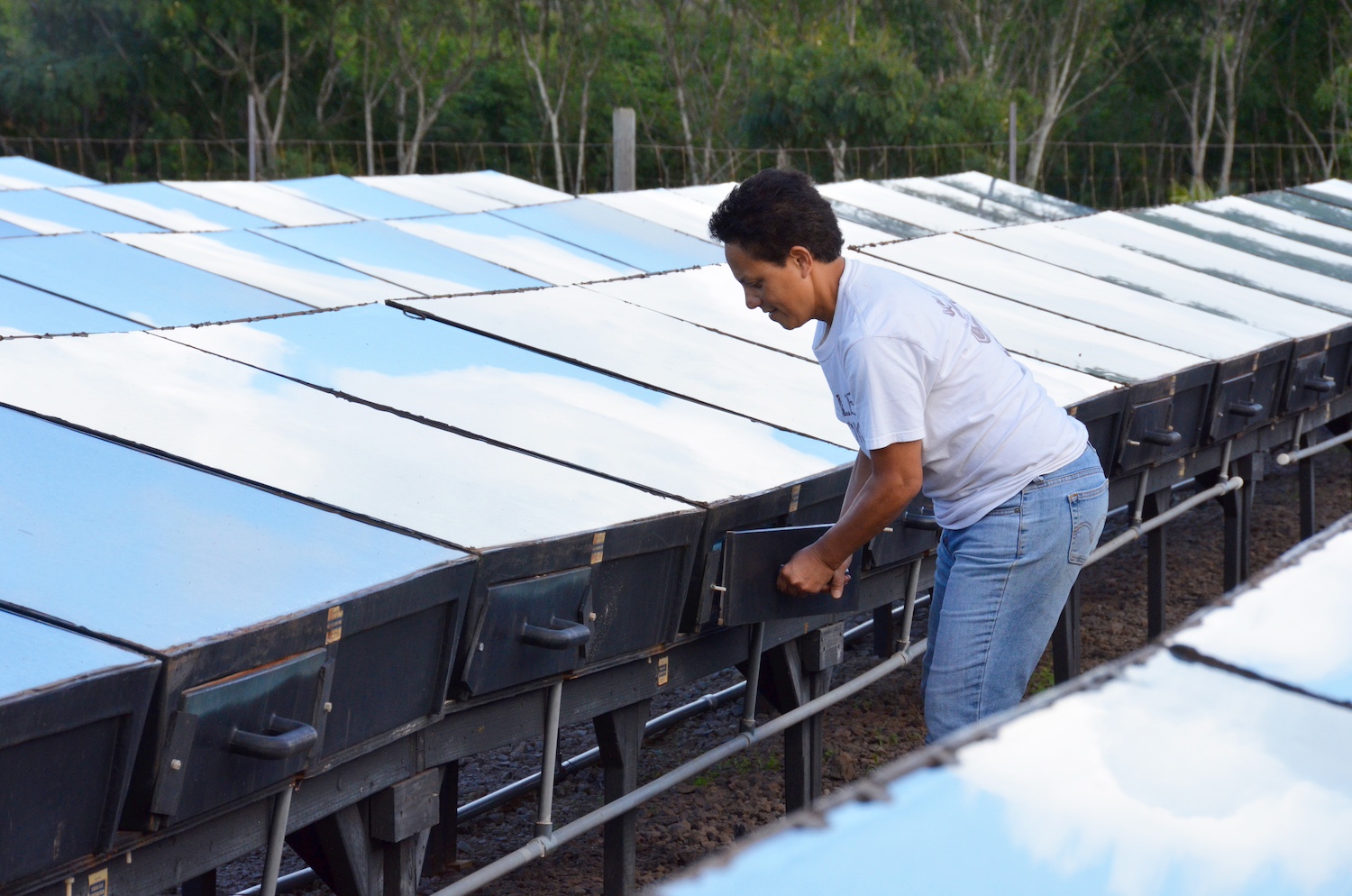
For a Just Energy Transition, Oil and Gas Workers Must be Heard
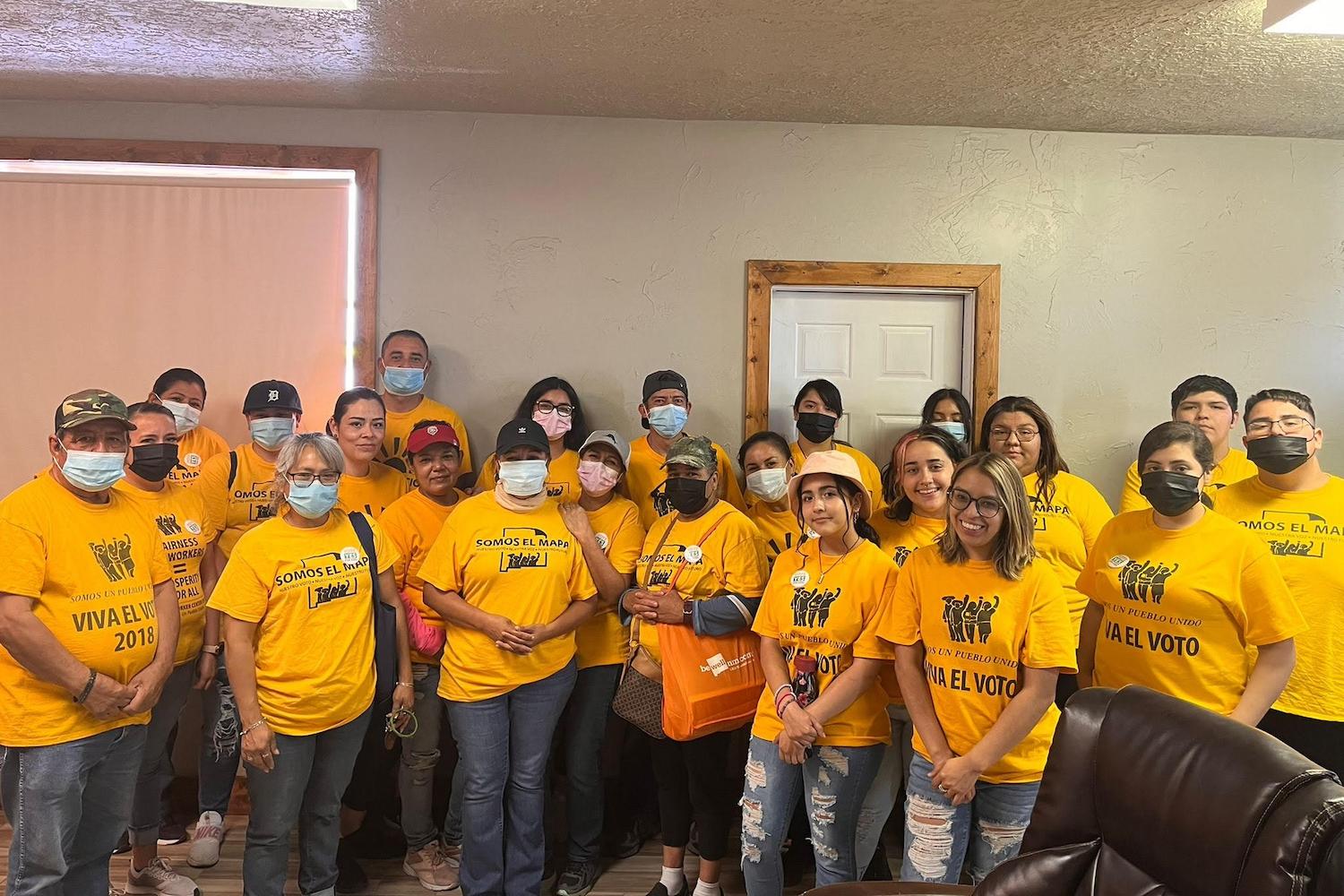

(Image: Somos un Pueblo Unido)
New Mexico’s Permian Basin, one of the top oil regions in the United States, could reach peak production as early as 2030. The change is essential to reduce carbon emissions in the fight against climate change, but without proper planning, it will significantly impact oil and gas workers. Immigrant workers are set to suffer the worst from the fallout, forcing them to abandon the place they call home in search of financial security elsewhere.
“They've already been displaced from their home countries, in part because of climate, in part because of other economic and political issues,” Marcela Díaz, executive director of the immigrant rights organization Somos un Pueblo Unido, told TriplePundit. “So here they are, and they want to stay. Our members want to stay in this region where they have grown roots and where they're raising their children.”
That won’t be possible without substantial investment in workforce development. As of now, the oil and gas industry is the only major employer in the area. While other industries are set to enter the region, immigrants who work in the oil and gas sector will need further education and training to fill those positions, Díaz said. But many are not eligible due to their undocumented status. A just energy transition is dependent on funds and programs that will bridge the gap, which is where Somos comes in.
A dangerous and exhausting industry
Oil and gas workers put in long, hard hours in conditions that take a toll on their bodies and health. In the Permian Basin, they work 12-hour days that stretch to 16 including the commute. Due to the physical demands of the job, most workers are forced to retire by the age of 55, Díaz said.
In this non-union region, workers don’t have pensions or retirement payments available to them when that time comes. While U.S.-born oil and gas workers can at least collect Social Security income once they reach retirement age or become too disabled to work, those who are undocumented are ineligible, despite paying into the fund. Likewise, they cannot receive unemployment when the industry slows, as it will after peak production, or has to shutter temporarily like it did at the start of the COVID-19 pandemic.
“It's one of the least regulated industries when it comes to health and safety,” Díaz said. “This is the reality for folks, so we're organizing around all of those issues and making sure people know what their rights are when they get injured on the job. We start where people need support, and help, and want to organize to better their conditions … This is what our major first step was, to expose the reality of life for families within that context.”
At first, it was the workers' wives who most often showed up to organize, she said. Only about 15 percent of oil and gas workers in the area are women. In an effort to include workers and accommodate their schedules, Somos built a committee to meet in the evenings and during weekends, resulting in hundreds of members meeting regularly. Focus groups are also done on weekends, so workers can speak directly about their experiences and needs related to the low-carbon transition.
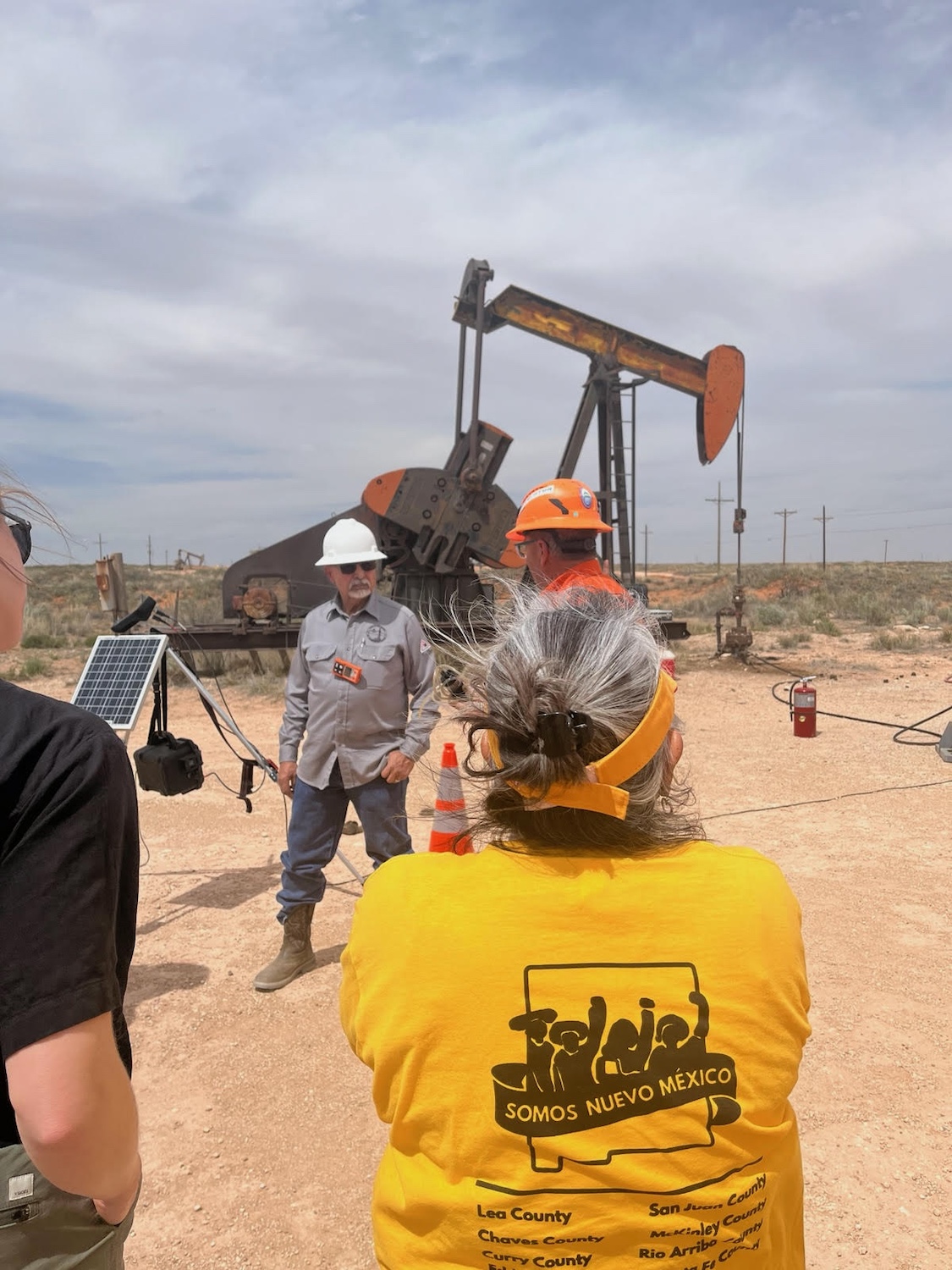
The evolution of Somos un Pueblo Unido
Somos didn’t begin in the climate justice and just transition arena. The 28-year-old organization initially worked on more traditional immigrant rights issues, such as removing Immigration and Customs Enforcement from local jails, preventing deportations, and securing access to financial aid, in-state tuition and driver’s licenses for undocumented immigrants. It expanded its reach to organizing for economic justice, workers' rights protections and sanctuary policies, thanks to input from members, Díaz said.
“If you're a membership-based organization and your members are immigrants, if you're listening and paying attention, you will eventually turn into a workers’ rights and an economic justice organization,” she said. “We have five worker centers around the state, including in the Permian Basin, so that people can come and organize around those issues and try to grow power in their local communities.”
Growing that power often means taking member demands to representatives outside of their immediate area. Local politicians have strong ties to the oil and gas industry, so organizers must appeal to urban and Democrat-leaning representatives instead, Díaz said. With 42 percent of the state budget coming from oil and gas revenues, members make it a point to request their fair share via investment in workforce development.
“Just like good old-fashioned organizing, we have campaign committees and they are driving and steering the work,” she said.
Somos members helped elect U.S. Rep. Gabe Vasquez, who took a bill to Congress to fund healthcare for immigrants working in the oil and gas industry. While the bill won’t pass, Díaz said it managed to bring significant national attention to the issues faced by workers who have otherwise been overlooked.
Challenges to a just energy transition
Oil and gas families want better for their children, which no doubt helps drive their determination to organize despite long work days and little free time. “They don't want their young people to go into the industry,” Díaz said.
A survey commissioned by Somos found that nearly 80 percent of oil and gas families do not want their children working in oil and gas. Yet, there aren’t any other options unless they go elsewhere in search of jobs.
Fortunately, new opportunities are coming to New Mexico thanks to the Inflation Reduction Act (IRA), the Bipartisan Infrastructure Law and the CHIPS Act. But for oil and gas workers and their children to access those jobs, workforce development — in the form of integrated and adult education, training and certification programs, and apprenticeship opportunities — is imperative. Otherwise, employers will bring in out-of-state workers, Díaz said.
“[Recently] we were able to get flexible money outside of WIOA [the Workforce Innovation Opportunities Act] for the first time,” she said. “So this is the on-ramp to a lot of the career and technical education.”
It’s a huge step considering WIOA funds — which undocumented immigrants are barred from benefiting from — are the primary source of workforce development in New Mexico. With peak oil and gas production drawing near, Somos and its members will have to keep up the momentum from victories like this, the organization and workers are both acutely aware of how quickly it’s coming.
Five Hidden, Sustainable Spots to Visit in Kingston, Jamaica


The view from the mountains in Blue and John Crow Mountains National Park in Jamaica. (Image: Gladstone H. Taylor)
Jamaica is a dream destination for many travelers, and most of its best tourist haunts are located on the coast outside of the capital city, Kingston. There might not be an abundance of treehouse resorts and beachfront villas like in the countryside, but deep in the heart of the city, you'll find hidden gems that are good for the environment and the local economy. Supporting locally-owned businesses like these ensures that your dollars stay in the community. Here are five sustainable spots to visit on your next trip to Kingston, Jamaica.

Ibo Spice Portal
The first stop on the list is a food oasis in the heart of downtown: Ibo Spice Portal. The locally-owned small restaurant and catering business is special because it’s what you least expect to find in the sweltering heat of downtown’s concrete jungle. The menu is completely vegetarian and vegan-friendly. It’s conveniently based a few blocks down from the famous Rockers International Record Shop, one of the only remaining vinyl shops in the country. Ibo is also nestled beneath a canopy of trees that do well enough to make one forget they are still downtown.
I stopped by the other day for lunch and had a great dish with a mix of bean and pea stew, boiled chickpea dumplings, banana, yam, stir-fried vegetables, grated beets and coconut. This all cost roughly $1,000 Jamaican dollars (JMD), which is just about $6.50 U.S. dollars. The restaurant also has a selection of natural juices that are great to pair with a lunch like this.

Veggie Campus
Another great spot to have a bite to eat is Veggie Campus, which is located roughly five minutes from the most central area in Kingston: the Half Way Tree neighborhood. This is an area you might frequent as it has the largest transport center in both the Kingston and St. Andrew parishes.
Veggie Campus is nestled beneath a canopy of tall trees that give it an earthy ambiance. It has outdoor seating arrangements that make waiting for the food worth it, and everything here is plant-based.
I’m a repeat customer, and the food is always great. I tried a meal there recently that included fried cauliflower wings, quinoa, stir-fried veggies and amazing barbecue circles. The whole meal cost roughly $1,200 JMD ($8 USD). It’s a great place to stop for some food with a full day of traveling ahead.
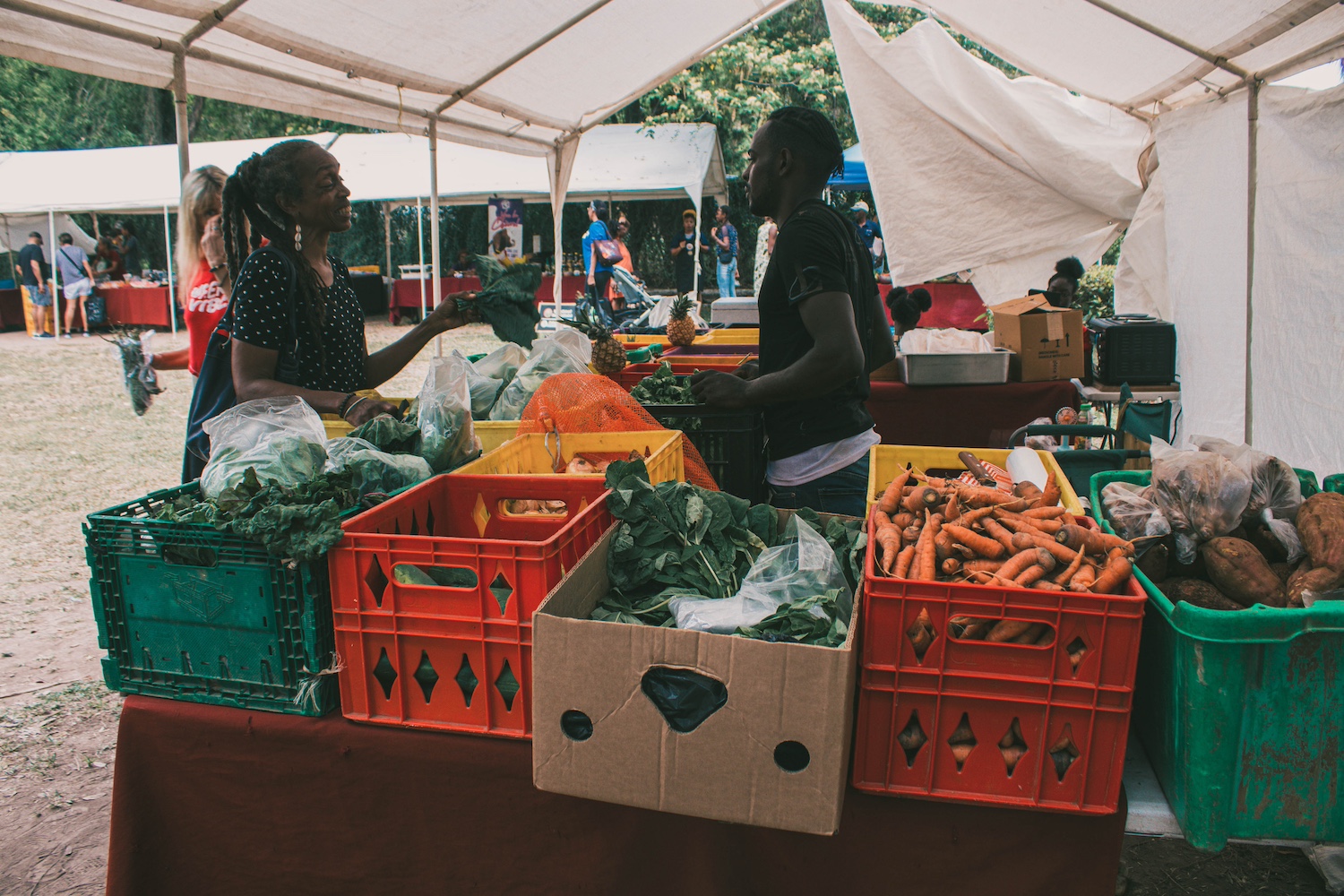
Ujima Natural Farmers Market
If you have the desire to cook rather than order takeout, the Ujima Natural Farmers Market is a good stop for some ingredients. The market was created by a group of local farmers in an attempt to provide access to organic, pesticide-free food in their communities. It’s held at the Hope Botanical Gardens. They set up as early as 9 a.m. and finish around 3 p.m., which gives you time to stop by even if it’s a busy day.
The market has strict rules for farmers to ensure the food remains organic, and each farm is scheduled for regular inspection by the board to check that the right farming methods are used. It's been a trusted source for good, clean food for years.

Hope Botanical Gardens
Speaking of the Hope Botanical Gardens, it is one of the few green areas left in Kingston, spanning around 200 acres. This beauty is the home of some of the city's oldest trees and endemic species of birds. It’s a great spot for a picnic, a group outing or a solo walk in nature.
The garden comes highly recommended because of its status as a habitat for important biodiversity. It’s run by Jamaica’s Ministry of Agriculture, Fisheries and Mining, but it has struggled to stay open in the past because of poor attendance. Visiting this oasis is a way of letting the Ministry know that we need to preserve the green spaces we have left. The entrance fee is only $200 JMD ($1 USD).
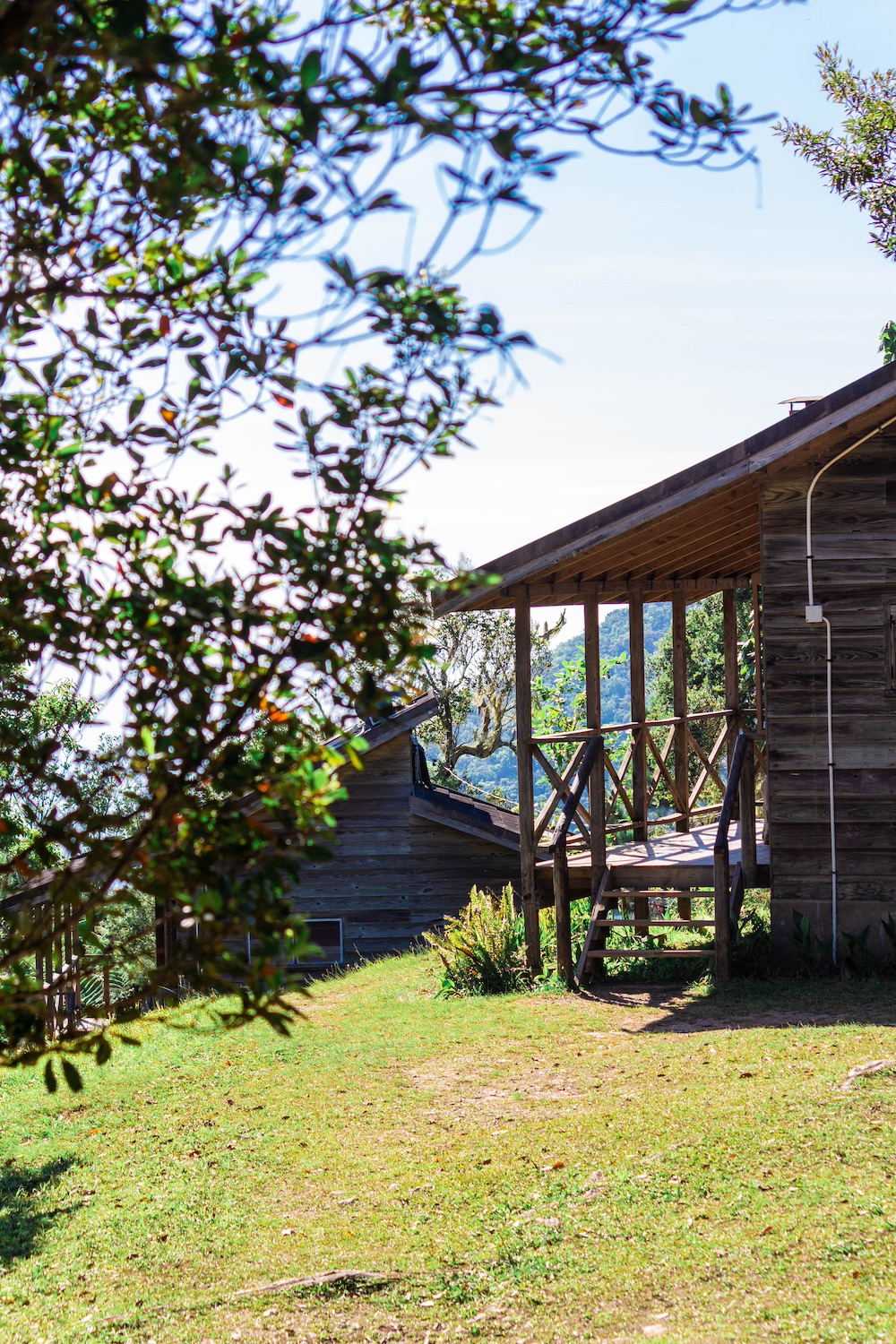
Blue and John Crow Mountains National Park
Last but not least is Blue and John Crow Mountains National Park. Technically, this spot is about 45 minutes outside of Kingston, but it makes the list because of its close proximity. The park was declared a conservation site back in 1993 — a declaration that spans the entire Blue Mountain range, which hosts the island's highest peak. The site is so important that the United Nations Educational, Scientific and Cultural Organization declared it a world heritage site in 2015.
The park hosts nature lovers from all over the city, and not just for the day experience. Backpackers, hikers and campers can spend the night out in nature in cabins run by the park staff. It’s a great place to steal away from the city for a few hours or spend a weekend under the stars. The entry fee is only $400 JMD per person ($3 USD).
This article is part of Travel Month in our 2024 Sustainable Living Challenge, where we unpack accessible ways to see new places and get around your hometown with a lighter impact on the planet. Learn more and take the challenge here.
Turning Captured Carbon Into Valuable Products Can Benefit the Environment and Economy
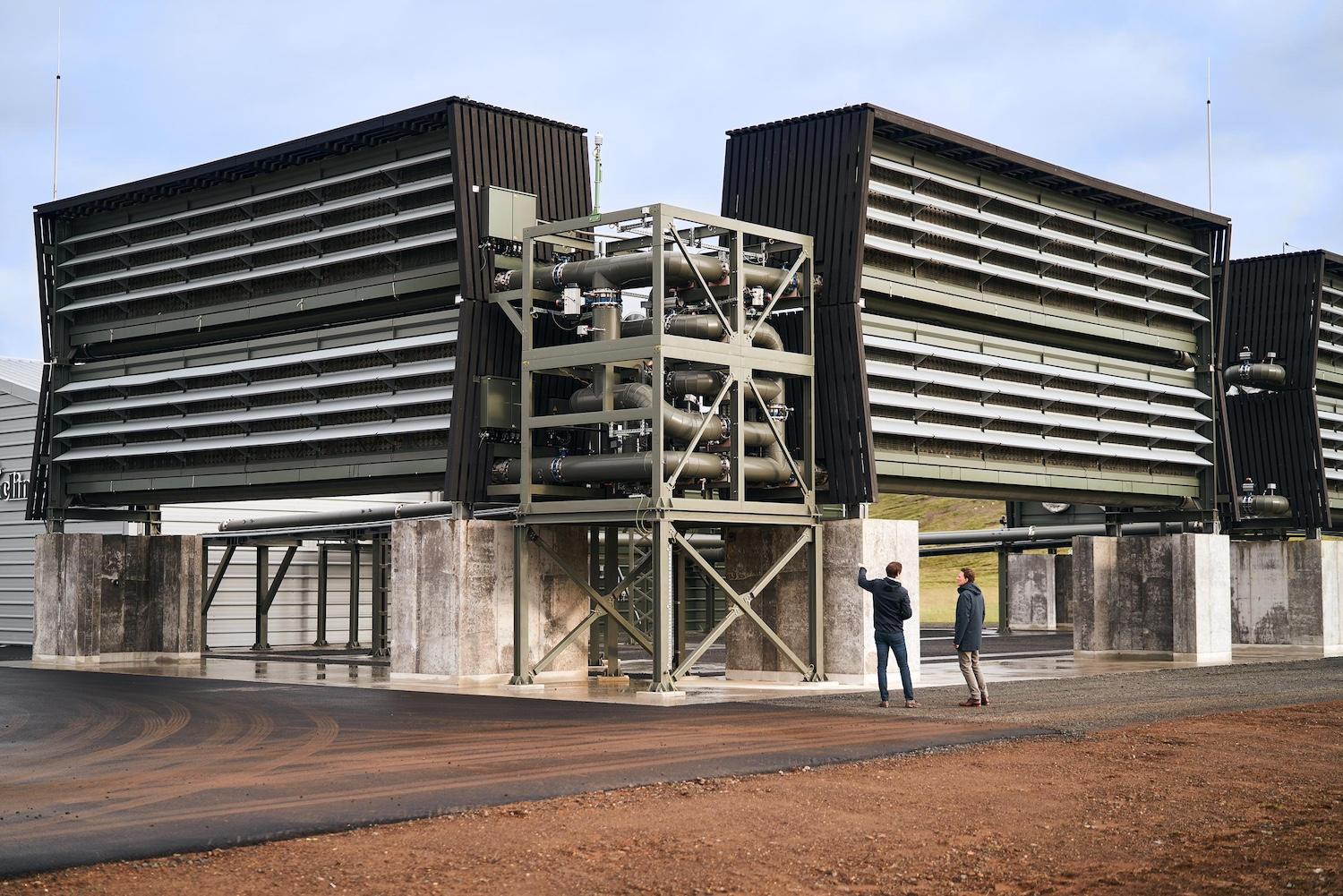

A carbon collection tower at Climeworks' Orca plant in Iceland. (Image: Climeworks)
With the right technology, carbon can be transformed into profitable end products and services that create jobs and support local economies — a win-win for the environment and the economy.
Carbon-to-value technologies use carbon dioxide to create valuable products for carbon-intensive industries, and they’re attracting global interest from profit-focused investors. As a result, there’s been an uptick in startups focused on carbon conversion, or the reuse of carbon as an end product or a component of new materials, representing a critical transition for the industry. Essentially, we’re creating a pathway that enables the conversion of captured carbon into fuels, chemicals, building materials, plastics, food, medical products, cosmetics and more — turning a harmful chemical compound into economic value.
Looking at available technologies to capture excess carbon, the industry has seen a scale-up of solutions such as carbon capture and storage and direct air capture. These processes can mitigate climate change and environmental impacts by either capturing carbon from the atmosphere or preventing entry into the atmosphere altogether and storing it.
Point-source carbon capture technologies stop carbon dioxide at the source. Companies like Climeworks can remove carbon dioxide from the air through direct air capture and storage technologies. The captured carbon is then processed and safely stored deep underground where it mineralizes and can be contained for thousands of years.
In comparison, carbon capture and utilization has the potential to help prevent and reduce atmospheric carbon while also finding lucrative uses for the captured carbon. These technologies will capture or store carbon, and utilization locks it away in new, economically viable products -— contributing to reducing greenhouse gas emissions and fostering a circular economy where carbon becomes a valuable asset.
Technologies that mineralize and convert captured carbon dioxide into profitable, high-value products are particularly promising because they are carbon neutral, have an ultra-low energy penalty and serve large global markets. For example, CarbonFree Chemicals’ patented technologies capture carbon dioxide from emitters and transform it into carbon-neutral chemicals such as baking soda, precipitated calcium carbonate and hydrochloric acid. Continuing with the momentum across the industry, CarbonFree recently announced a partnership with U.S. Steel to deploy its SkyCycle platform at U.S. Steel’s plant in Gary, Indiana, its largest facility in North America.
Capturing carbon’s potential
The momentum behind carbon storage and utilization efforts started in 2017 when the U.S. Department of Energy Bioenergy Technologies Office (BETO) introduced the idea of carbon emissions as a carbon feedstock at the Engineered Carbon Reduction Listening Day.
“Feedstocks are materials used directly in manufacturing processes and transformed into an intermediate or finished material,” according to the U.S. Office of Energy Efficiency and Renewable Energy. For many decades, the chemical industry has used fossil-fuel-derived feedstocks like natural gas to manufacture building block chemicals, such as ethylene and propylene, which are used to produce everything from plastics to fertilizer.
When carbon dioxide is captured and used as a building block for useful products such as concrete, plastics, carbonated drinks or fuel for cars, we reduce reliance on fossil fuels while limiting carbon emissions. The value here lies in creating products that provide economic value while slowing climate change.
The predicted market potential is enormous. The addressable market of “carbon tech” companies totals $1 trillion annually in the U.S. and $5.9 trillion globally, according to Carbon 180.
The three most promising product areas that could utilize captured carbon dioxide are fuels, chemicals and building materials. Despite the broad range of possible end products, these three sectors will likely have the largest addressable markets and, thus far, have been the most active.
The challenge? Public acceptance
One of the major challenges to the carbon-to-value movement is the public’s acceptance of products, such as carbonated water, created from carbon captured from a power plant's smokestack.
Approximately 69 percent of consumers were open to carbon capture and utilization-based products, according to a study completed in 2021. We expect favorability to continue to rise as carbon-based products become more popular, but there are a few things to keep in mind while that happens.
Carbon use, or reuse, is needed in addition to carbon reduction. More than emissions reductions are required to limit global temperature rise to 1.5 degrees Celsius, according to the Intergovernmental Panel on Climate Change. Ultimately, the end goal should be to reduce our carbon footprint, so there’s less of it to deal with. Combining carbon conversion technologies with carbon reduction initiatives will result in the best long-term outcome.
Useful products are not the only benefit of carbon capture and utilization. Creating a pathway to address the need for clean, reliable energy sources is critical to addressing climate change. In addition to the useful products we can produce, the main benefits of carbon capture and utilization are the prevention of carbon dioxide from entering the atmosphere as well as its removal from the air — which reduces overall emissions, especially in hard-to-abate industries.
Initial infrastructure costs remain high. The value and impact of carbon-based products must outweigh the associated costs. Scale-up is exceptionally challenging for first-of-a-kind technology projects. In addition to capital and infrastructure, expertise is necessary to get it right to avoid expensive delays and loss of investor support.
The need to manage carbon emissions remains high. To address rising concerns and worsening climate impacts, we must better understand how to reduce and utilize the excess carbon that is entering, and already present in, the atmosphere. The demand for carbon conversion technologies increases daily as our reliance on fossil fuels accelerates the negative impacts of climate change. By increasing the number of carbon-negative and carbon-neutral products available and encouraging their acceptance, we can reduce reliance on fossil fuels while stimulating the economic environment.